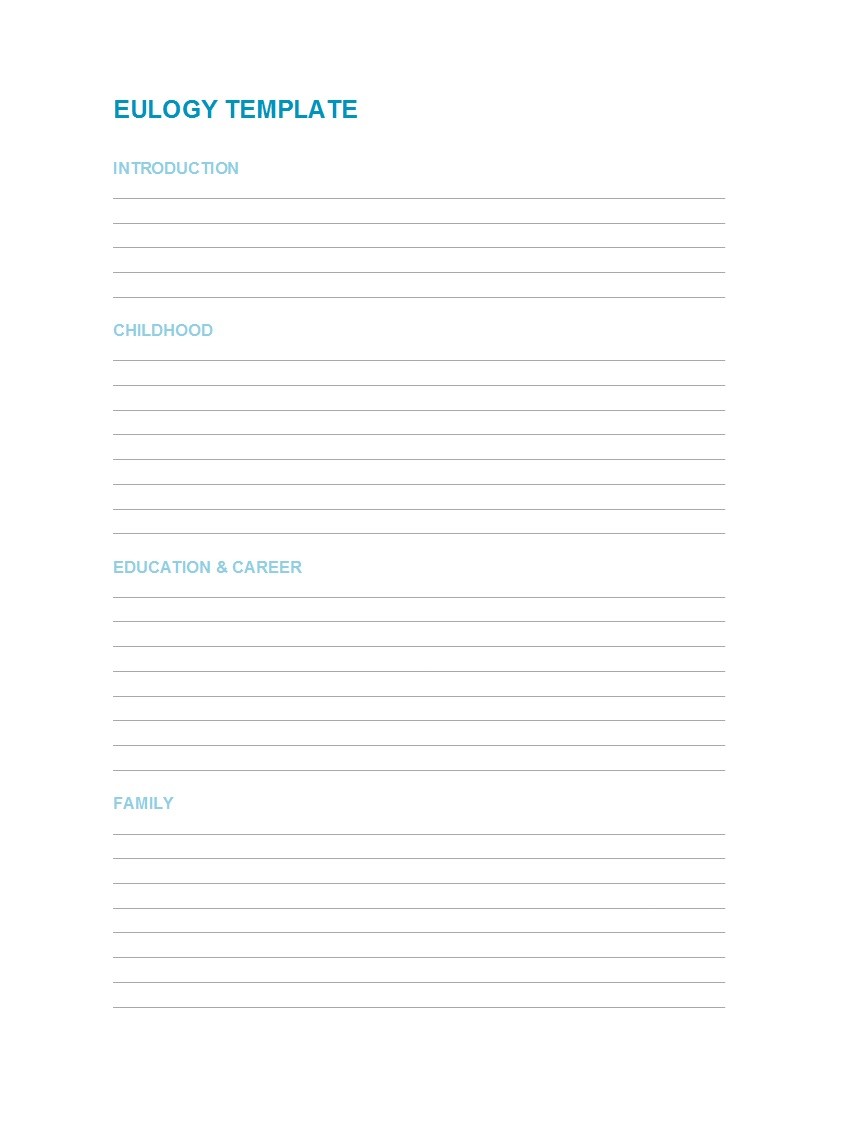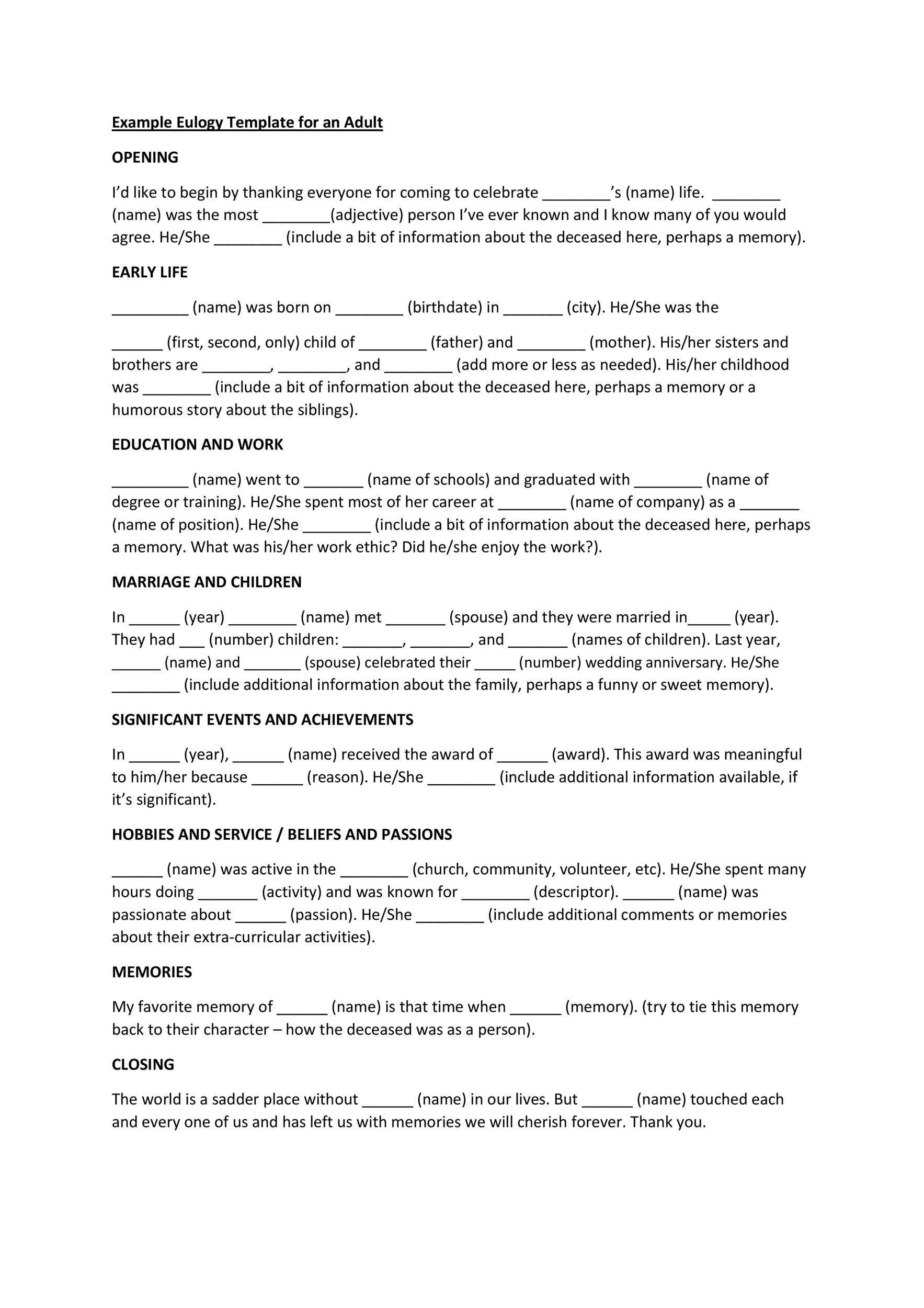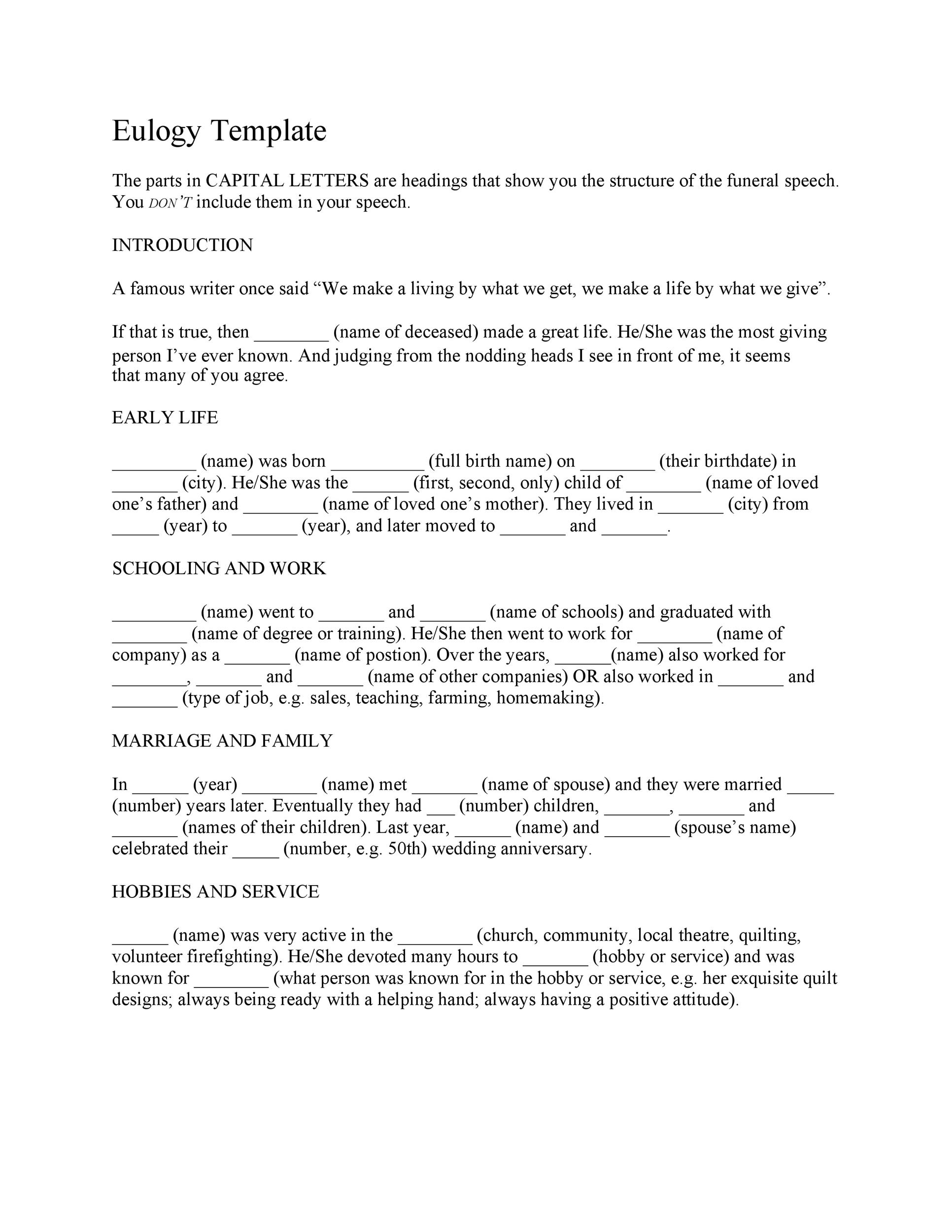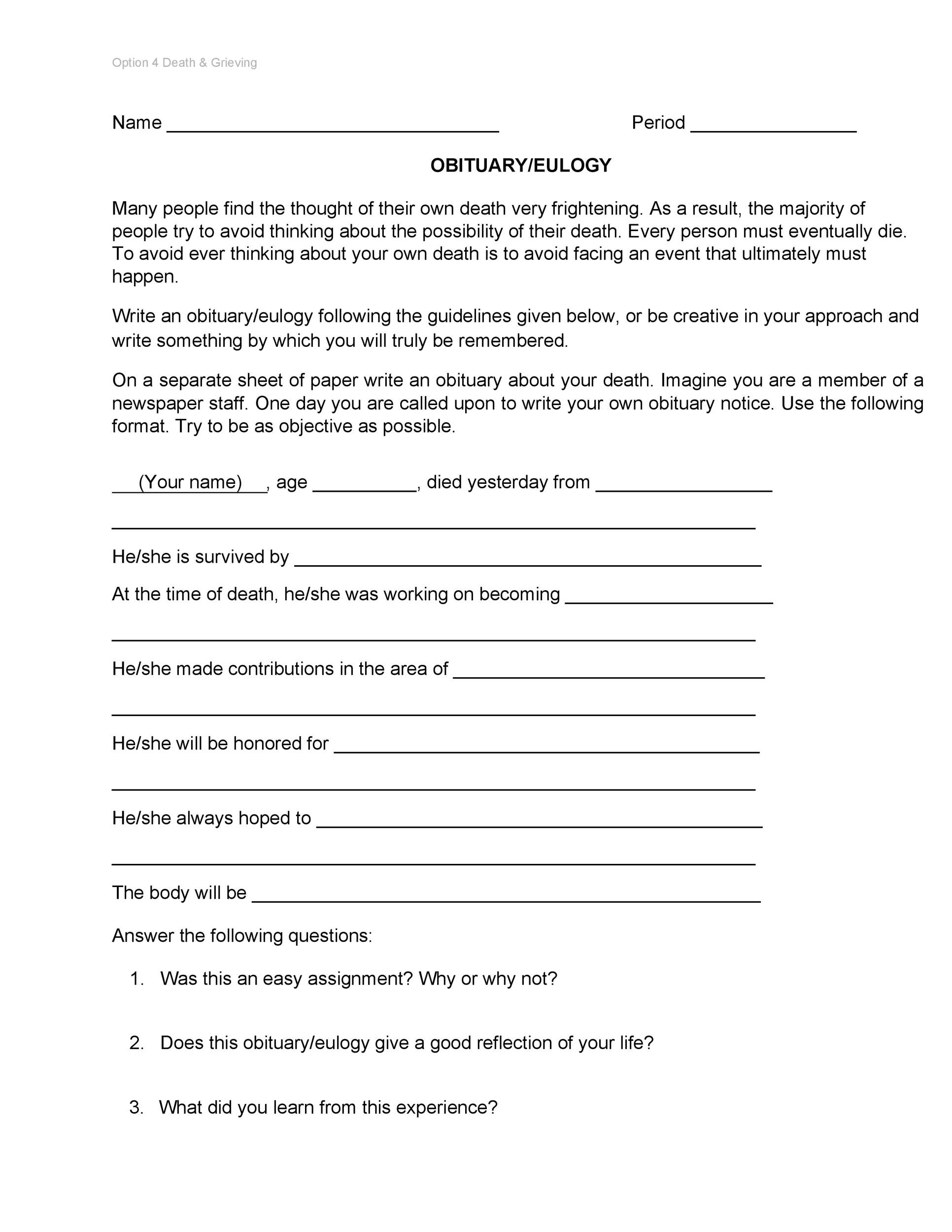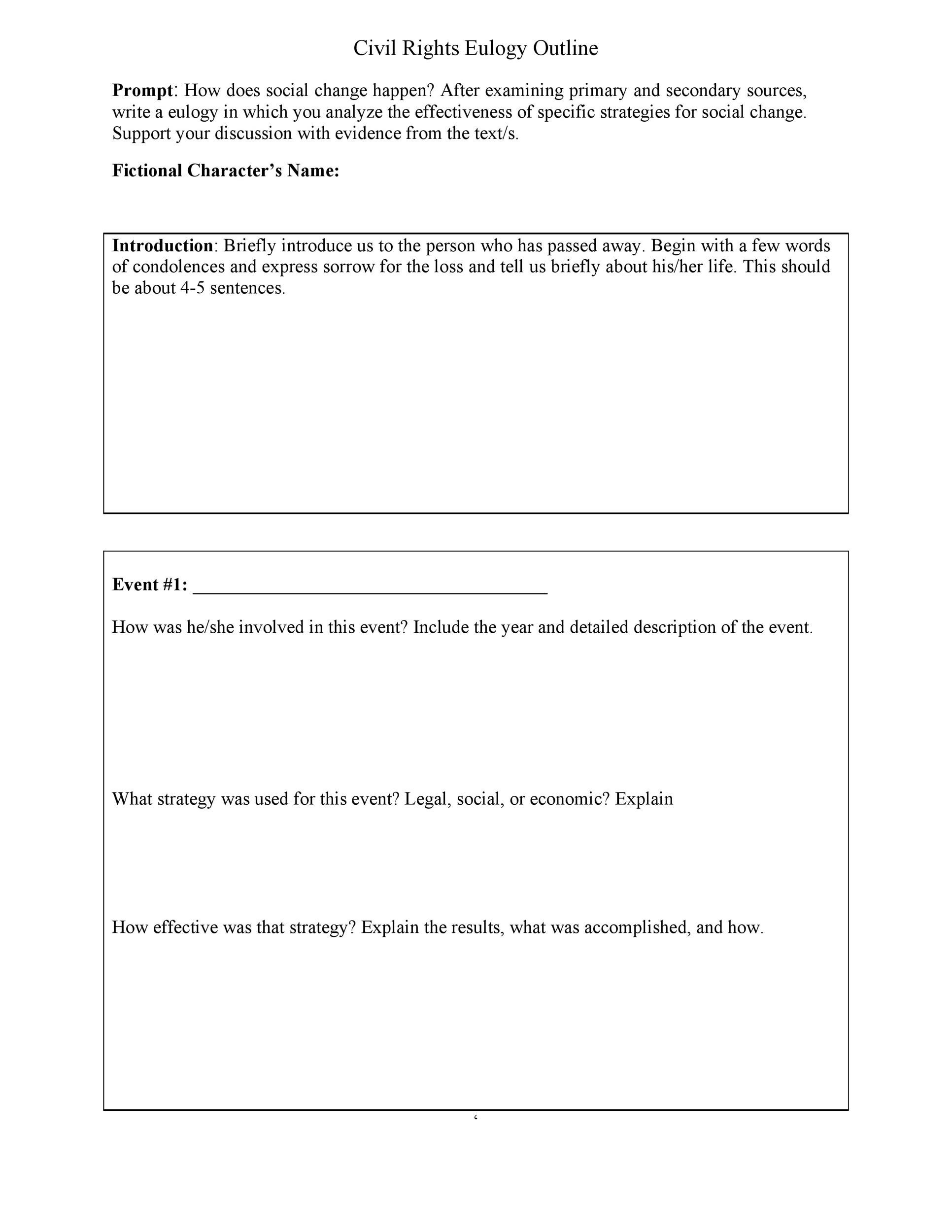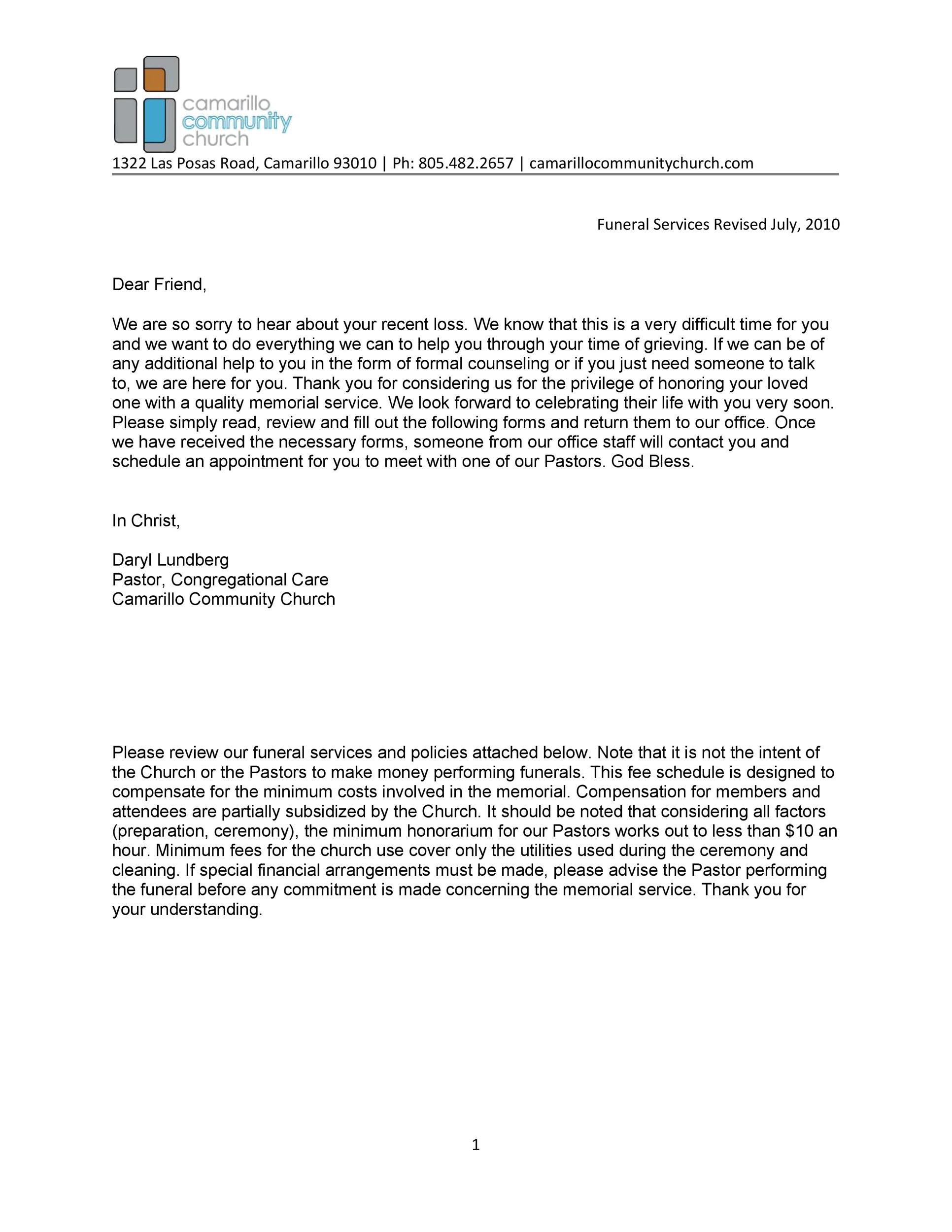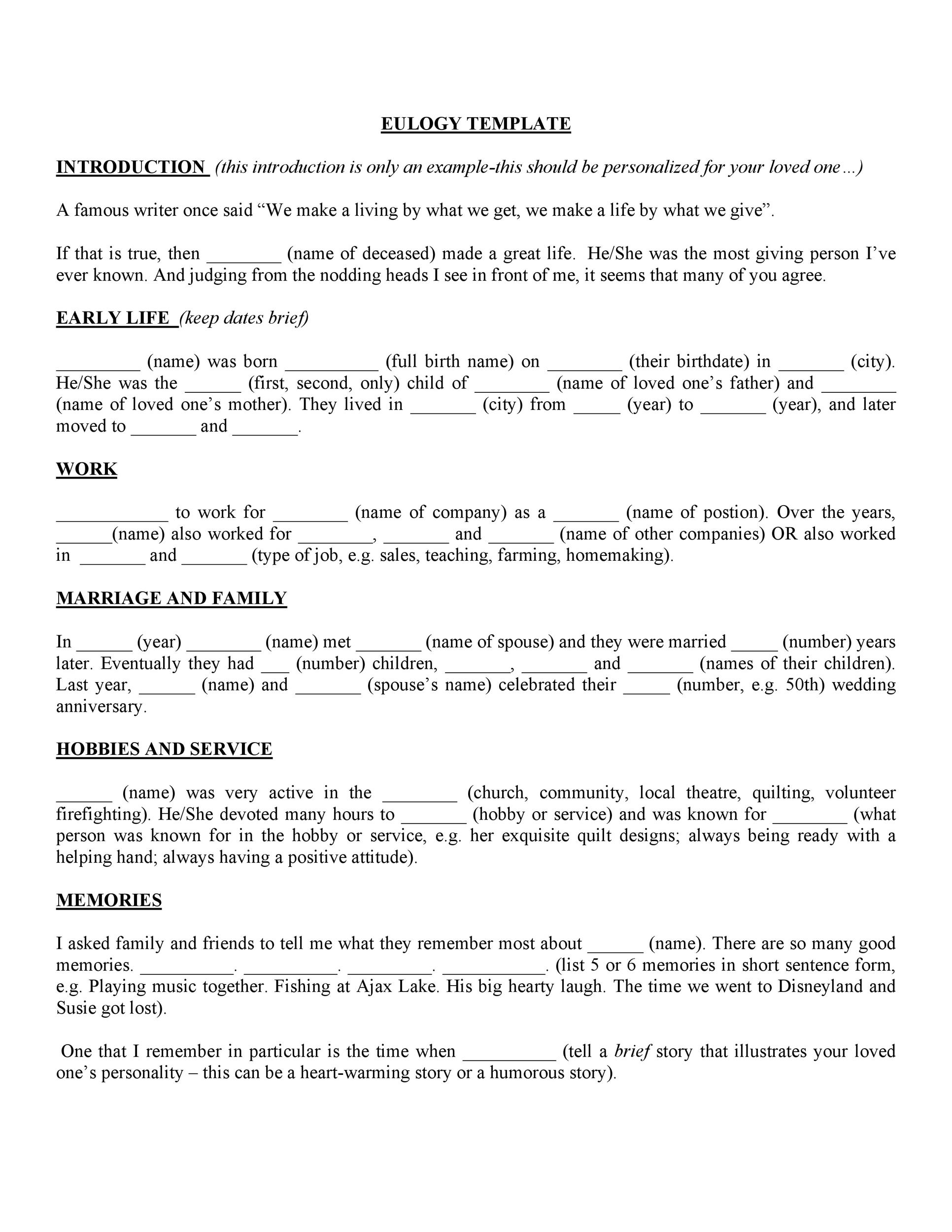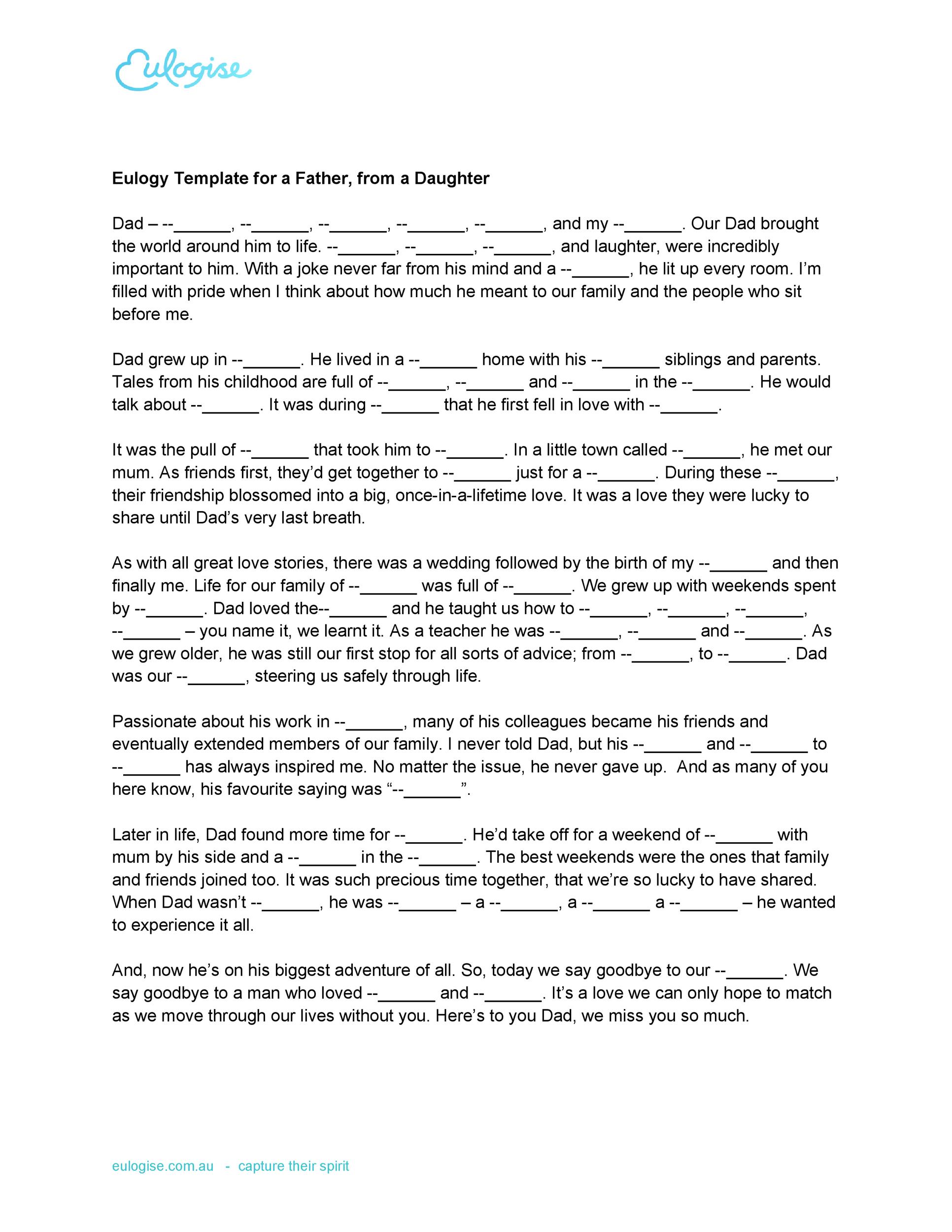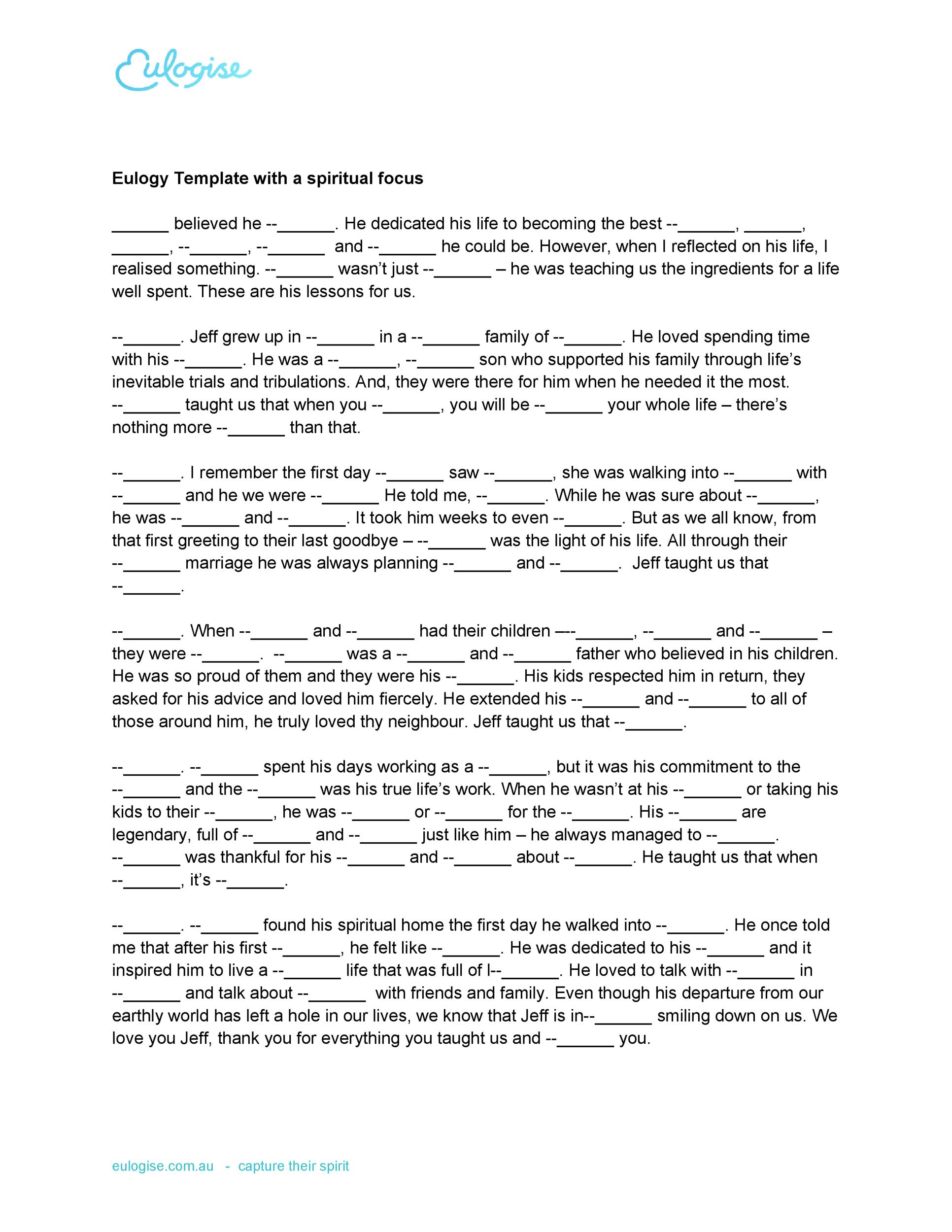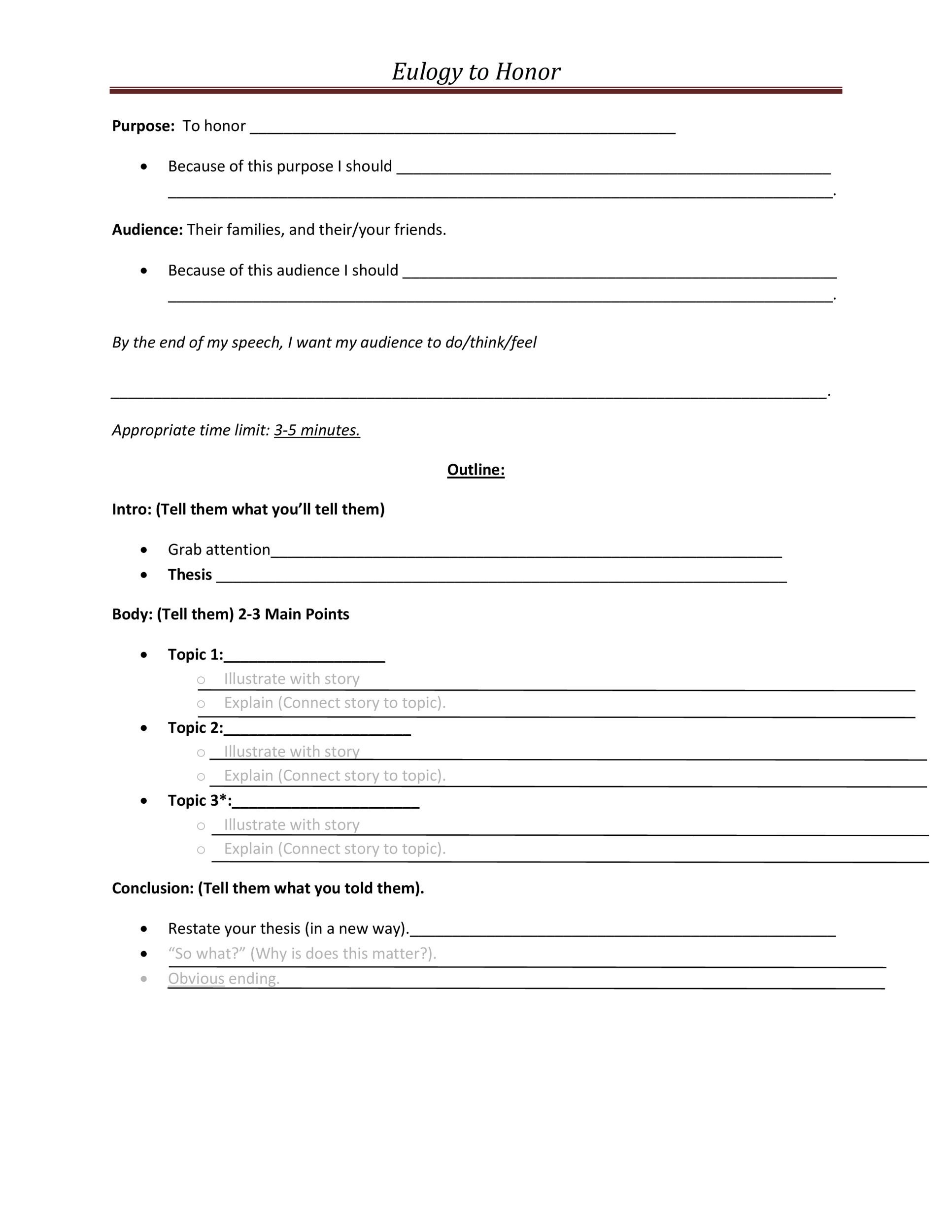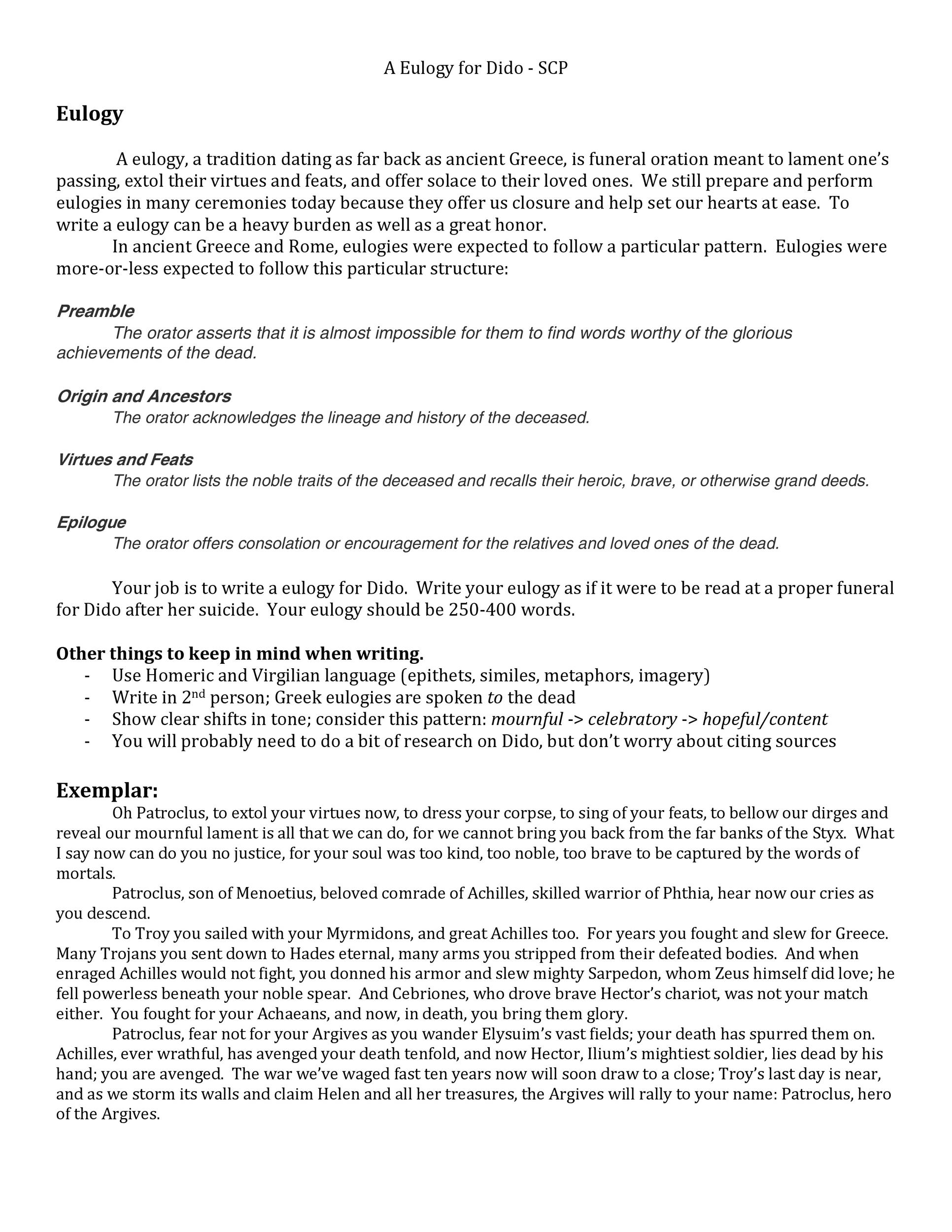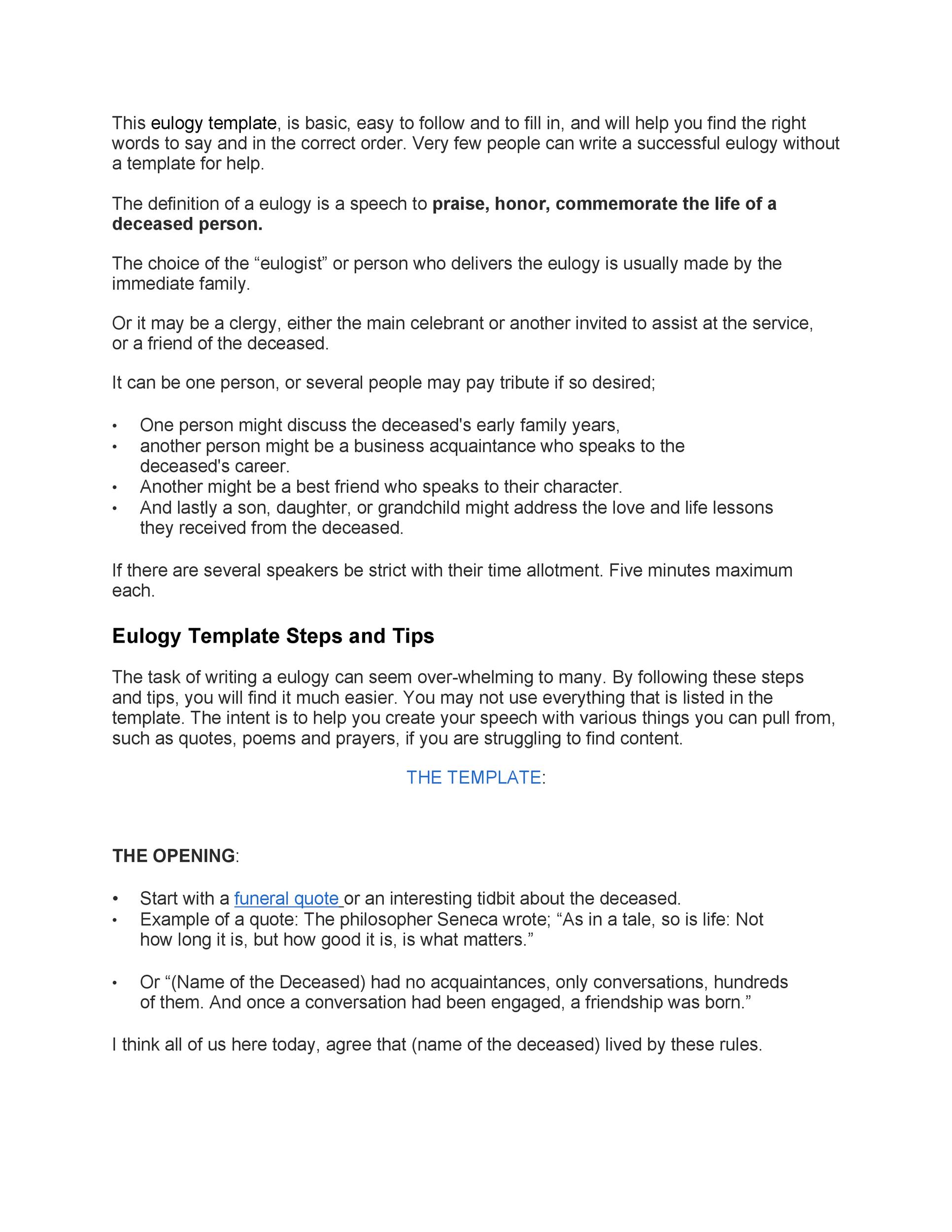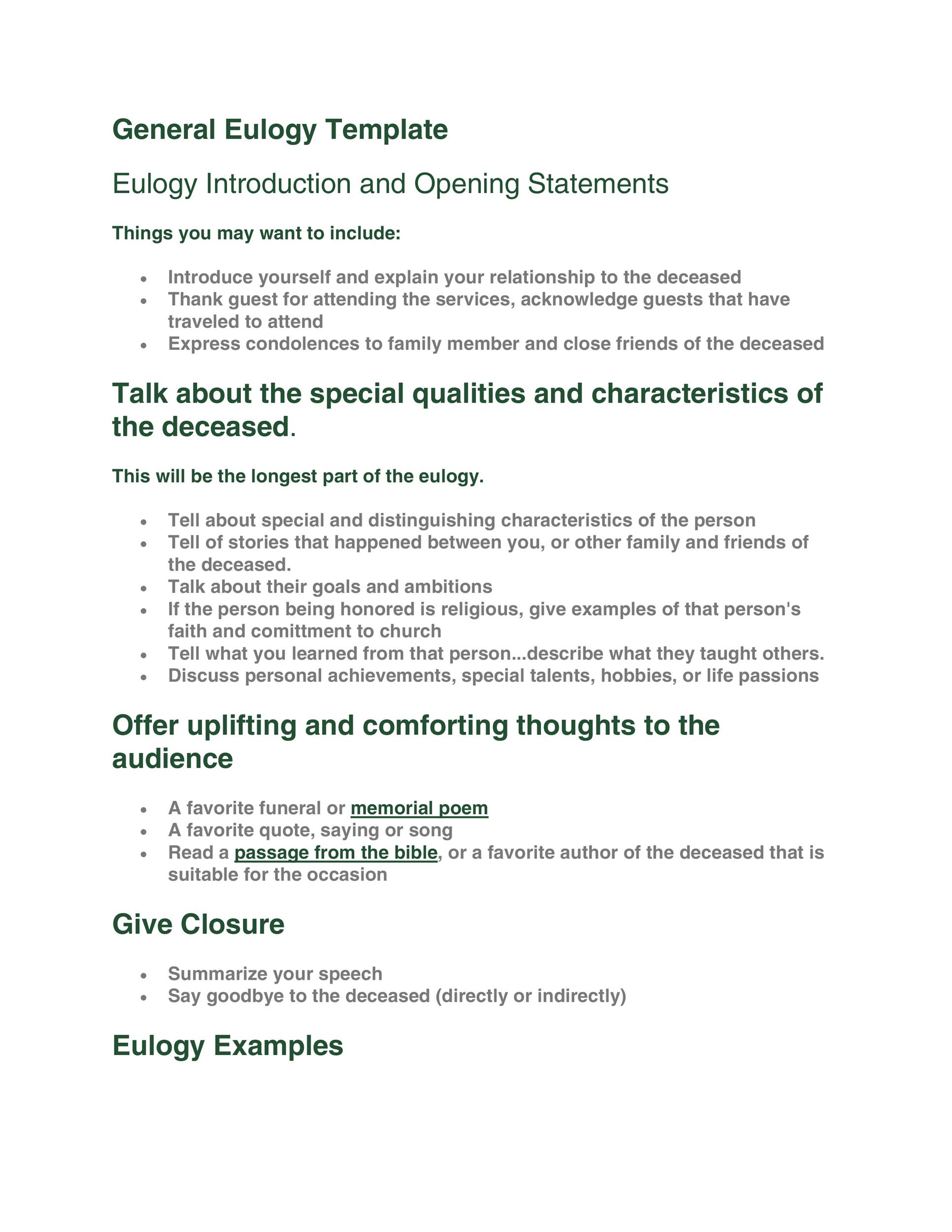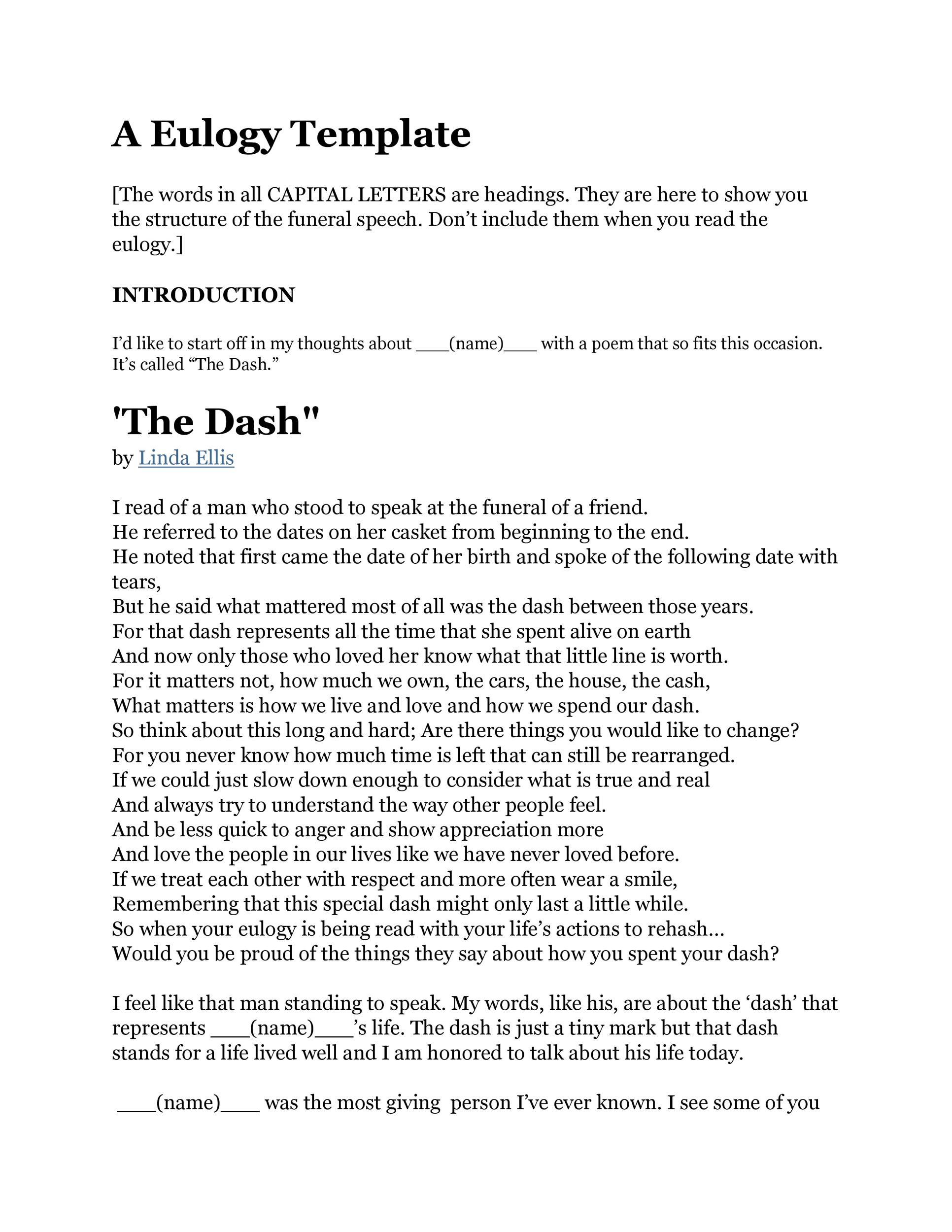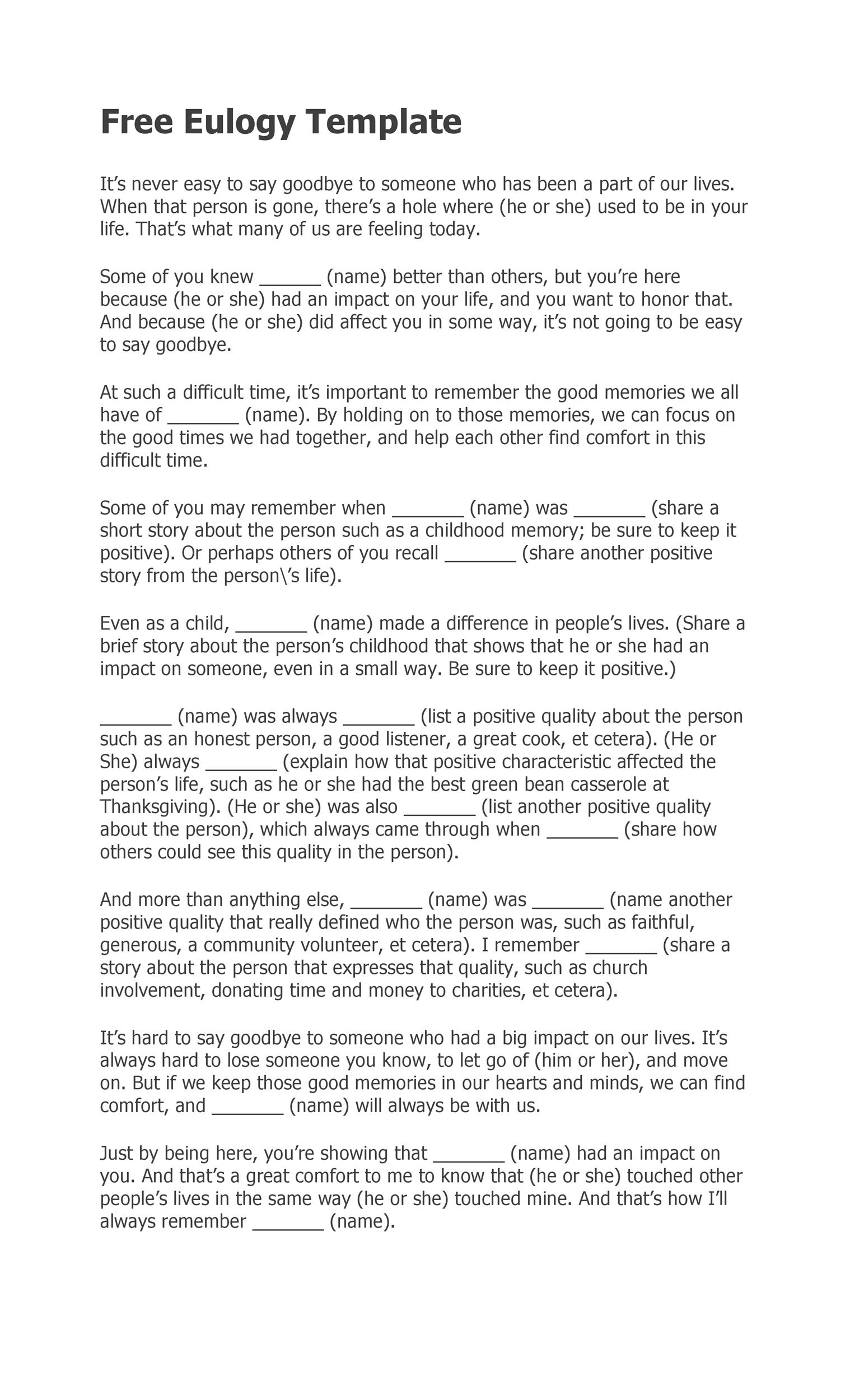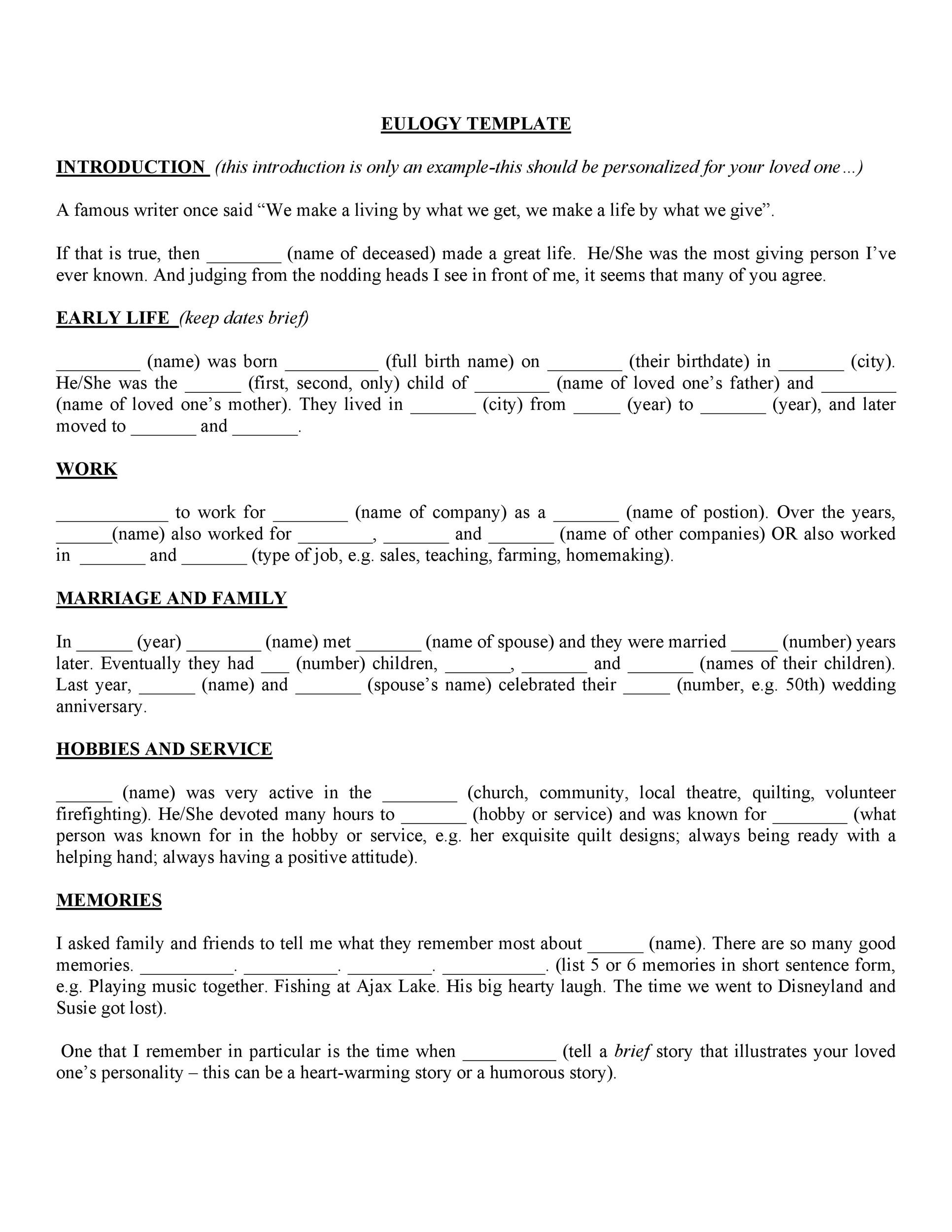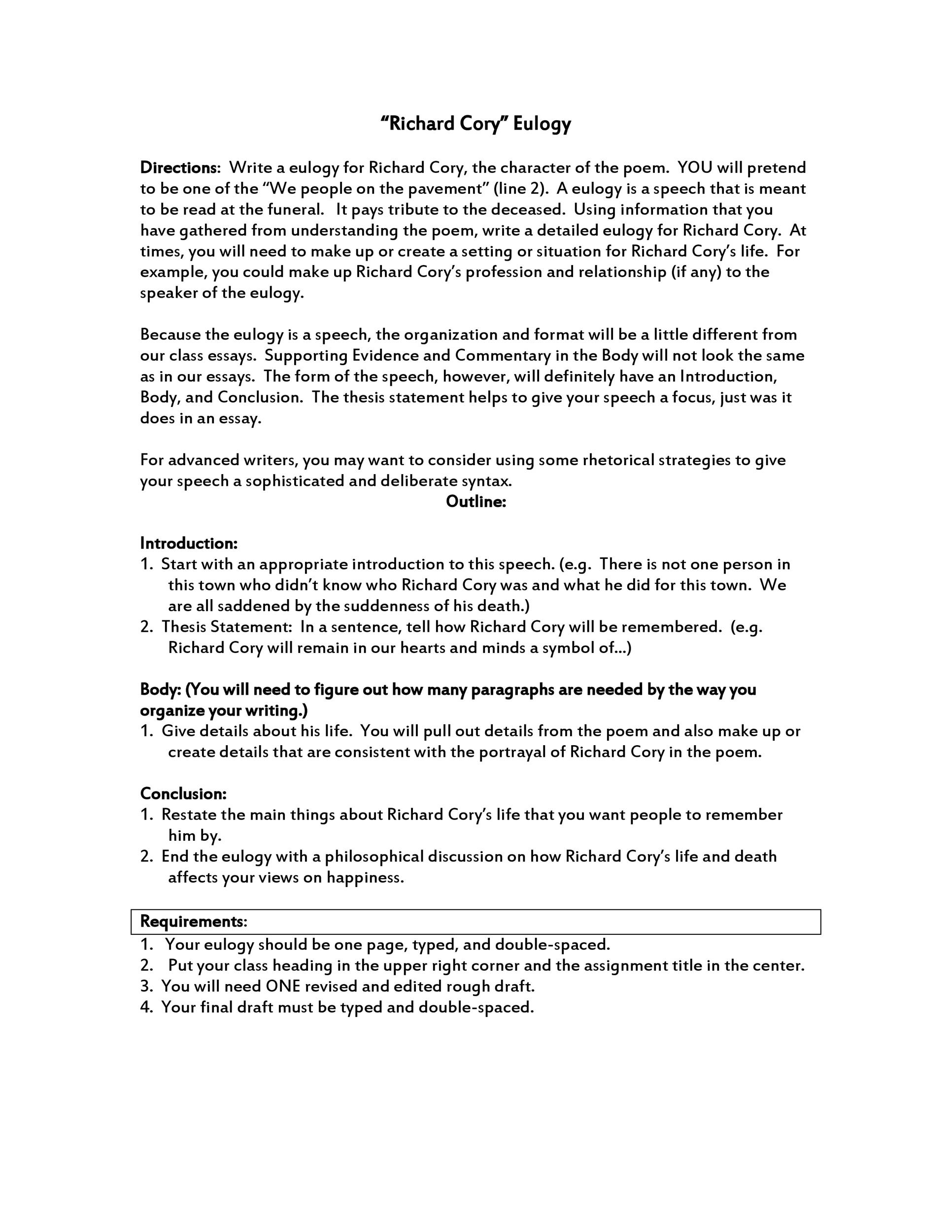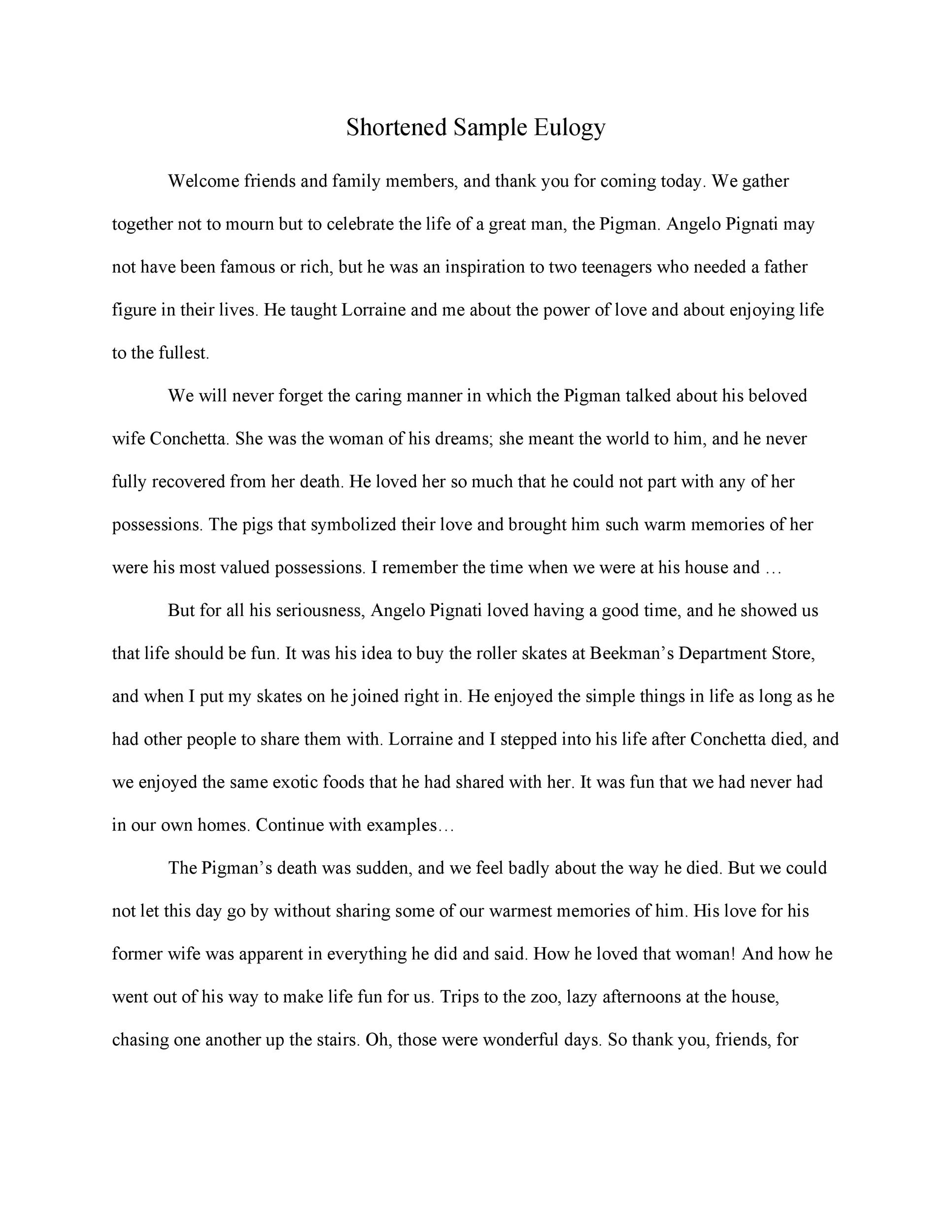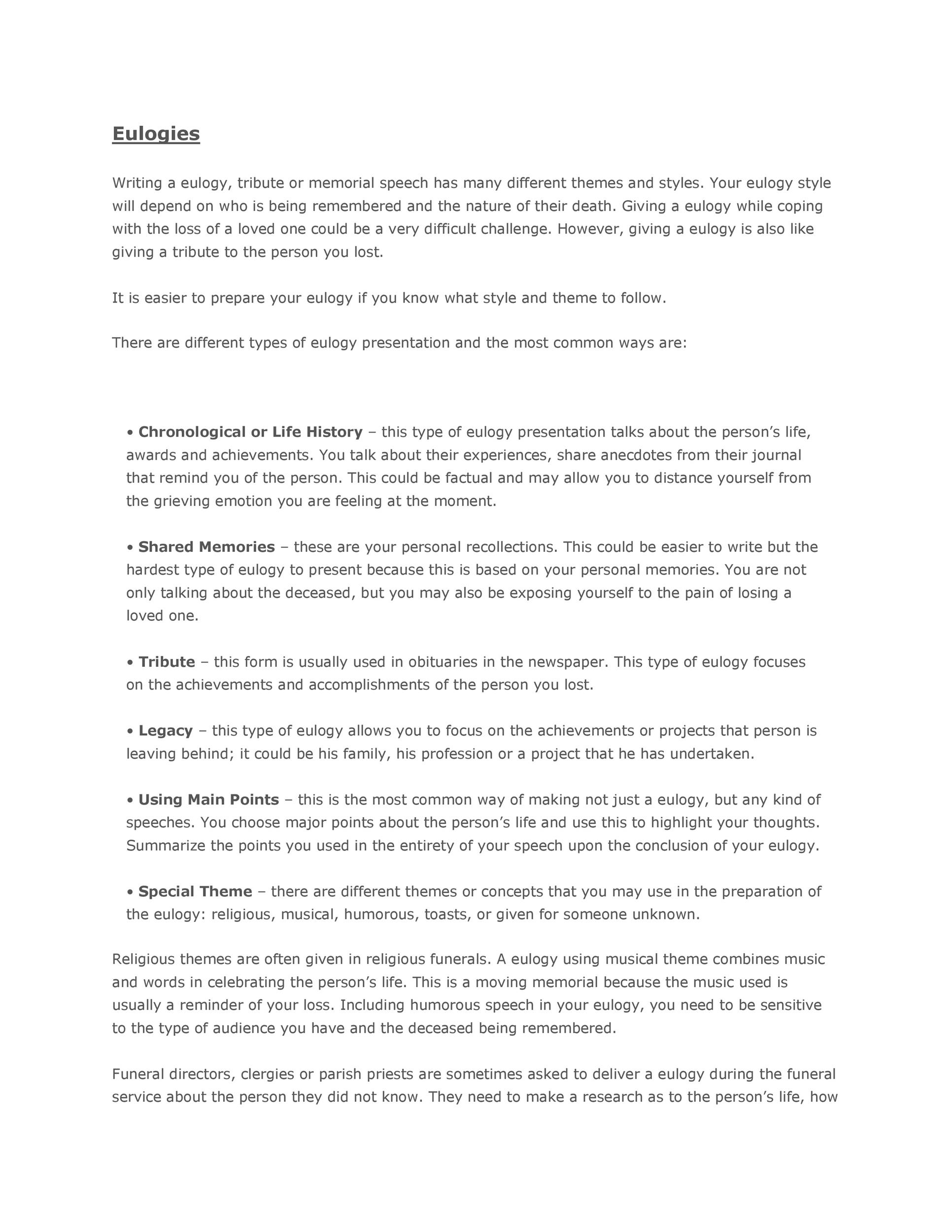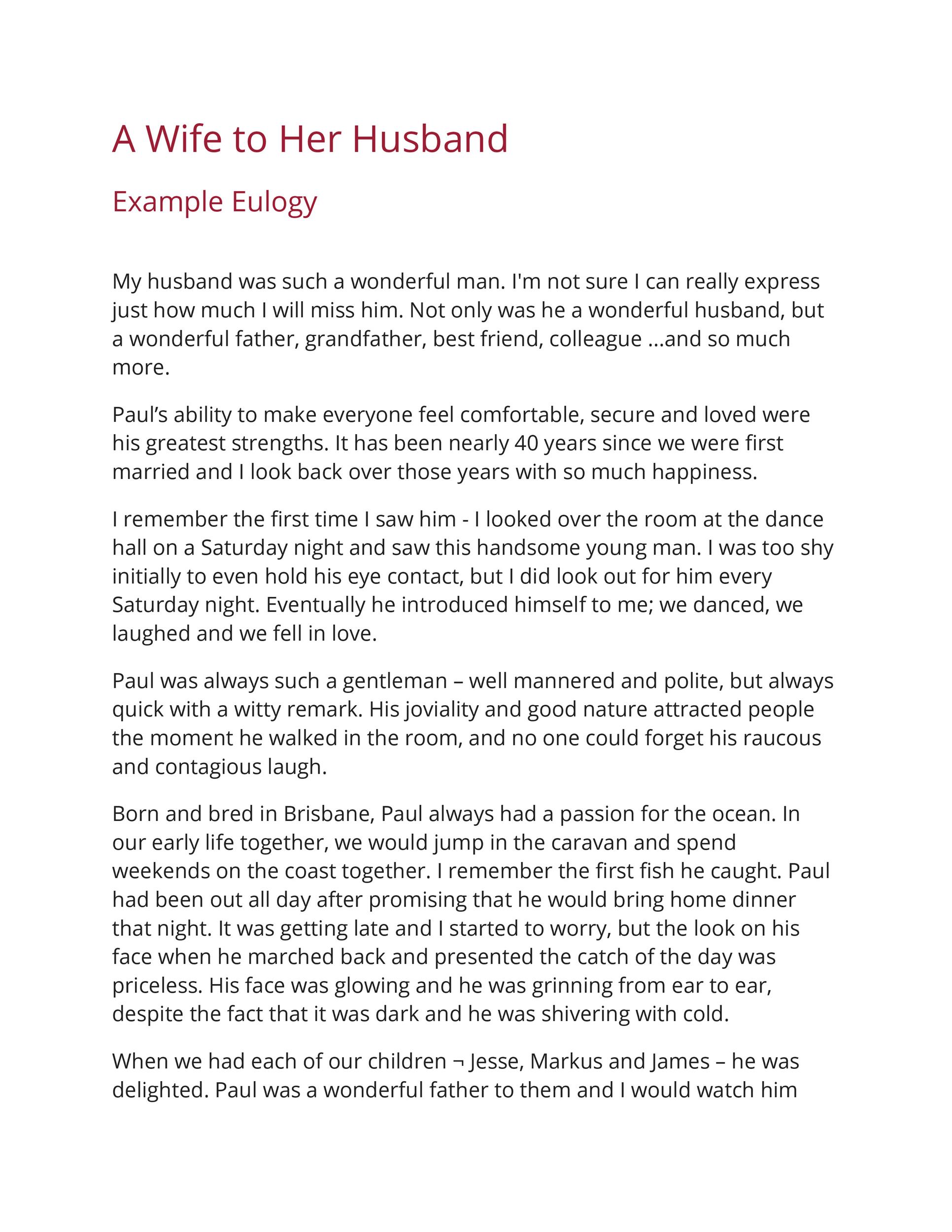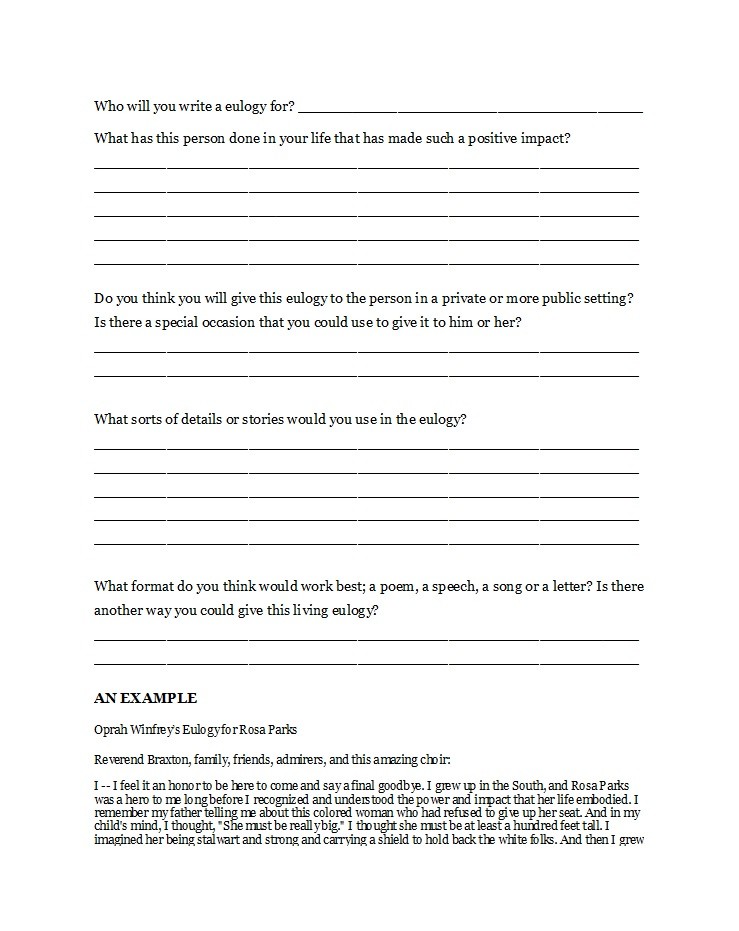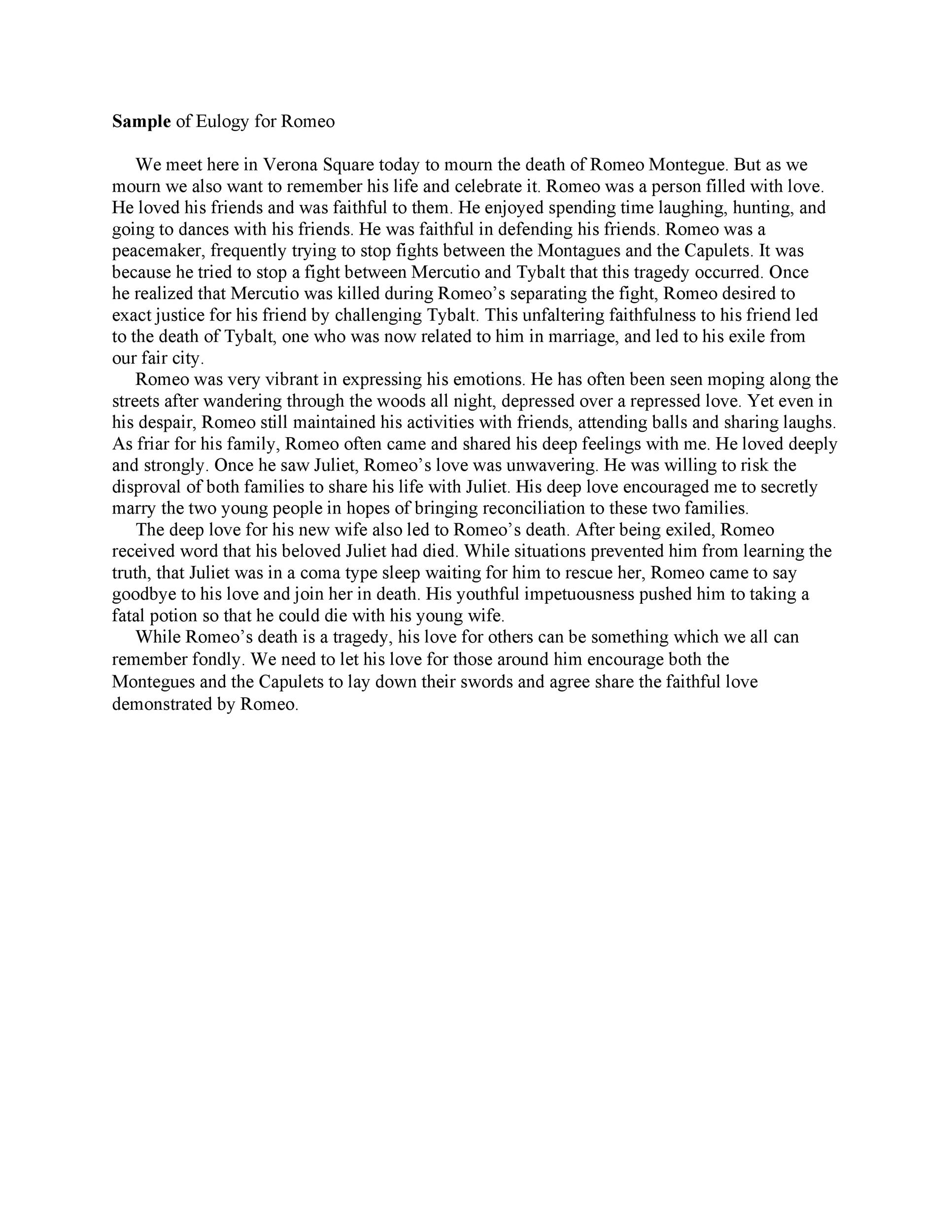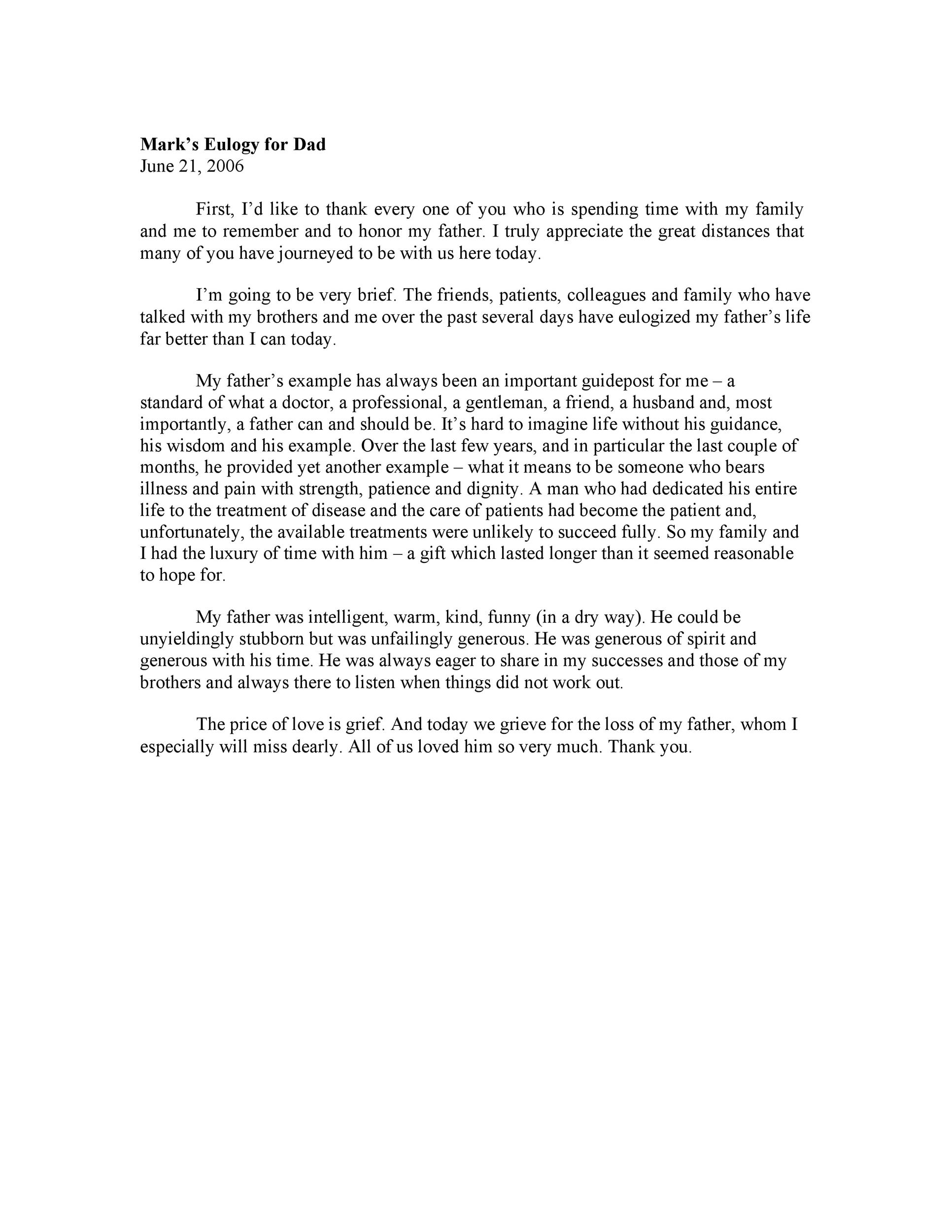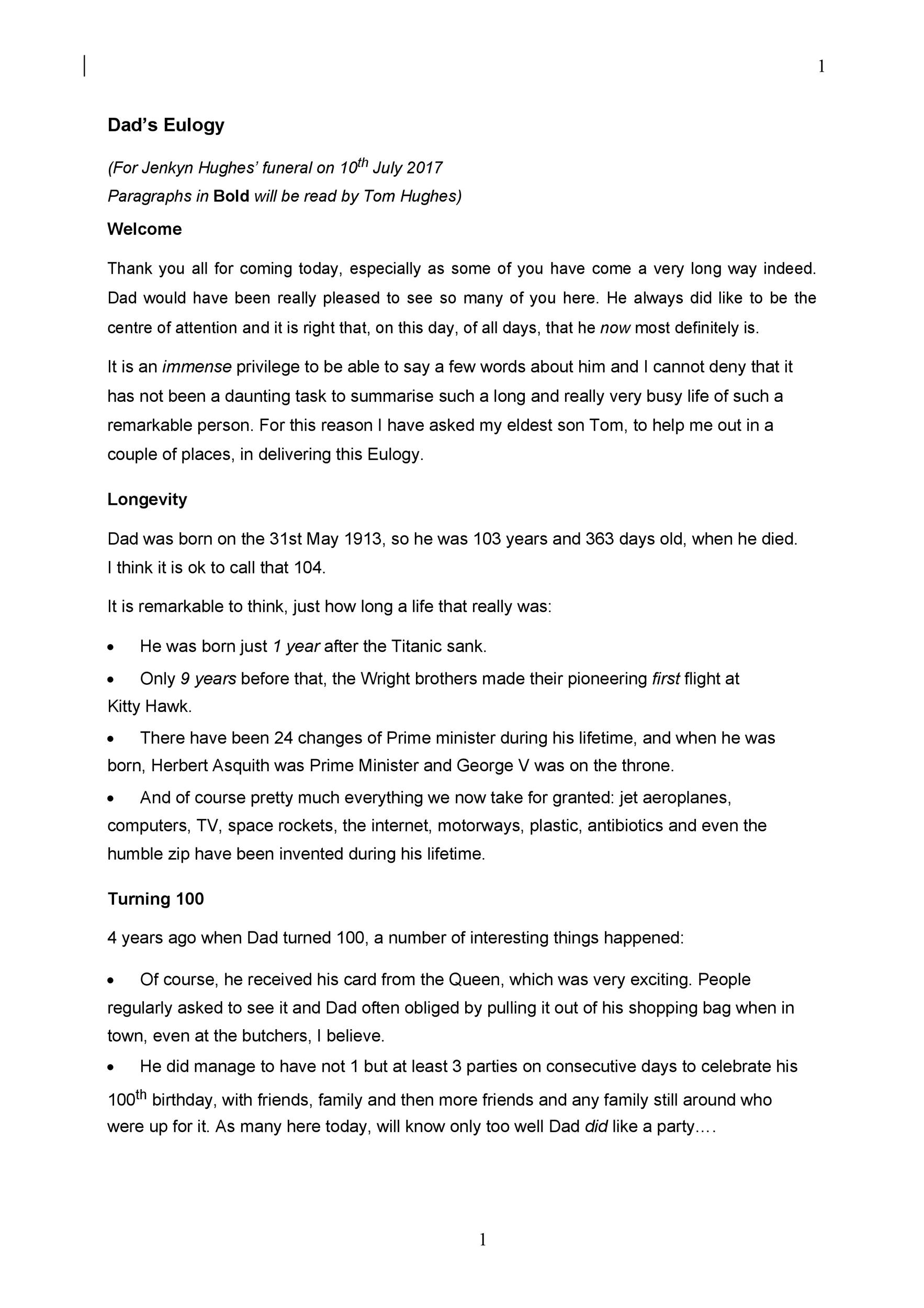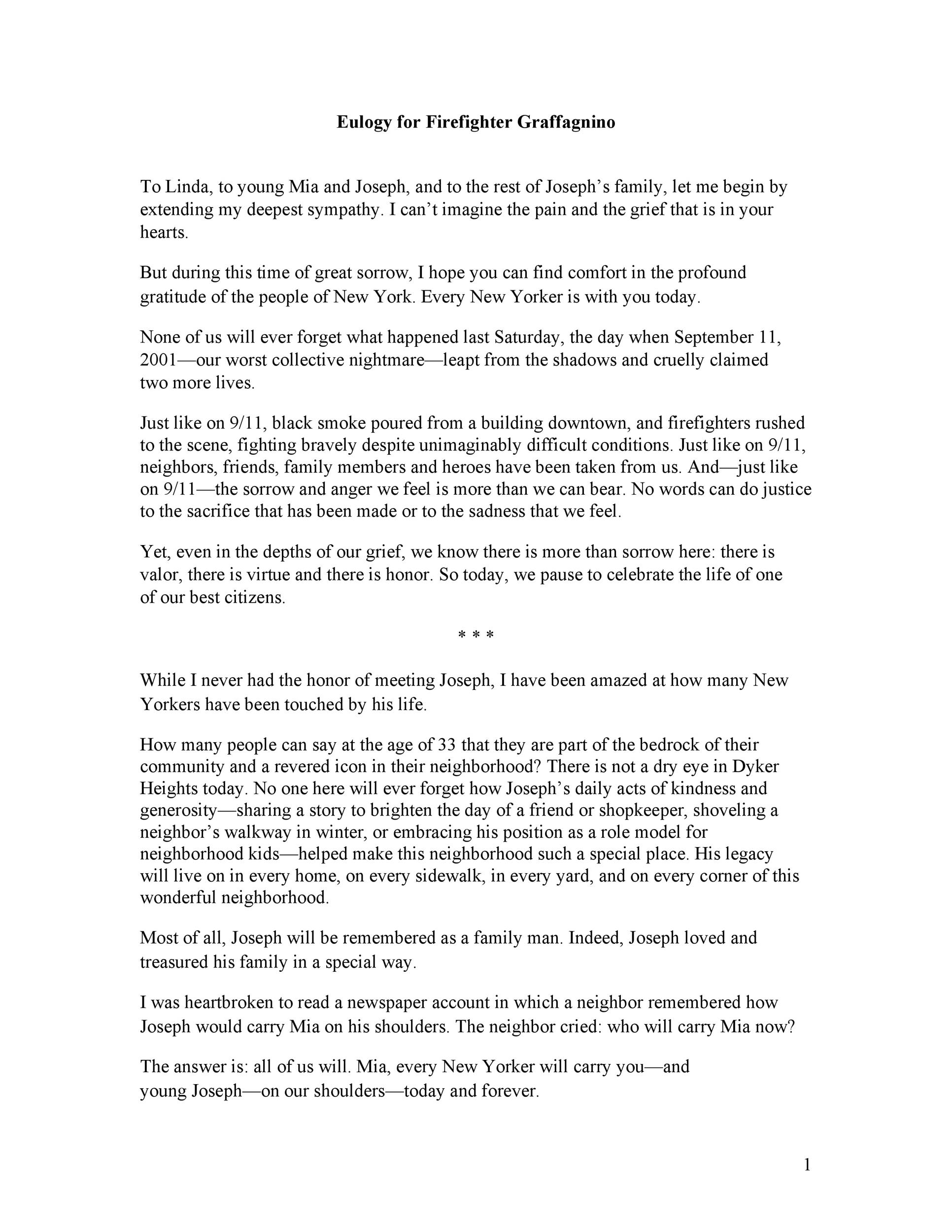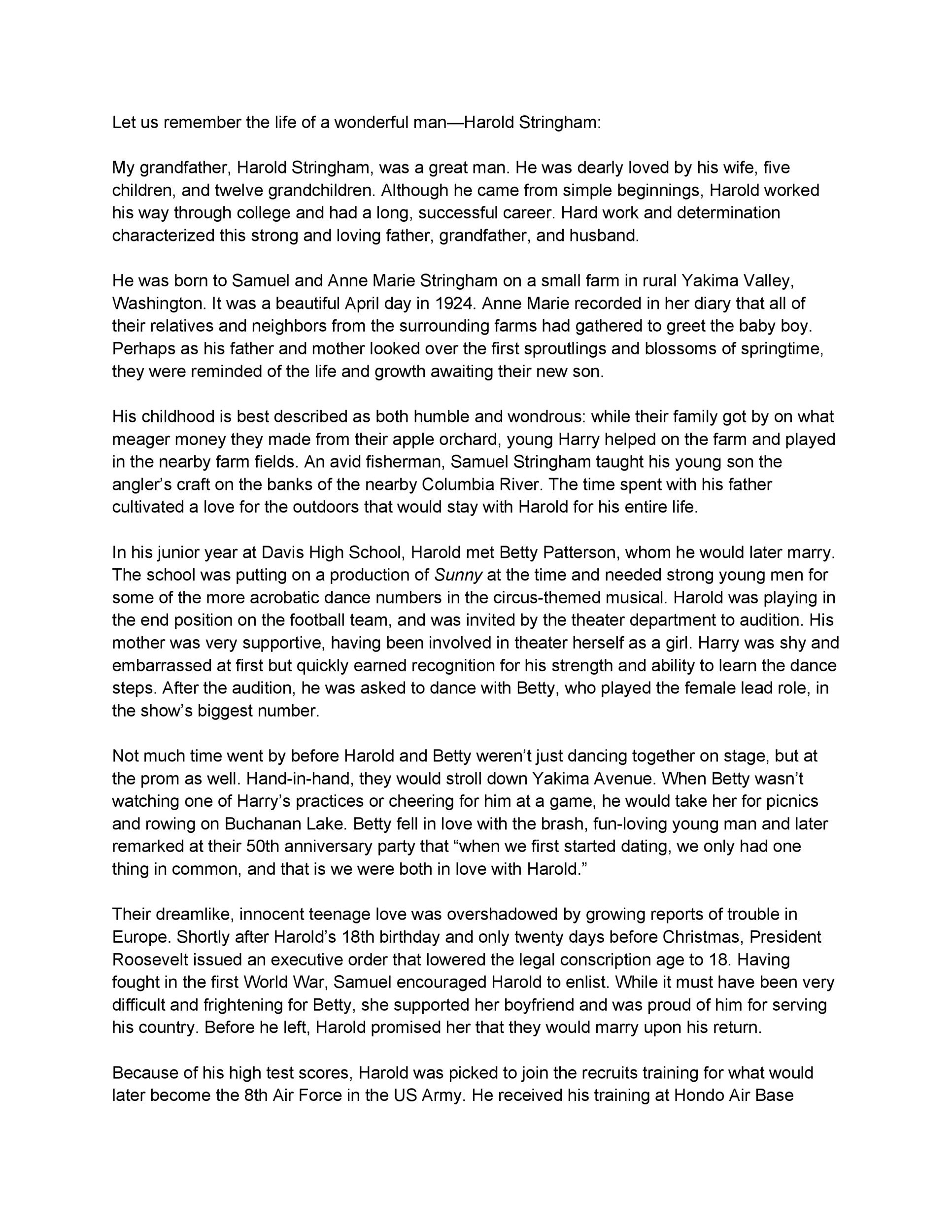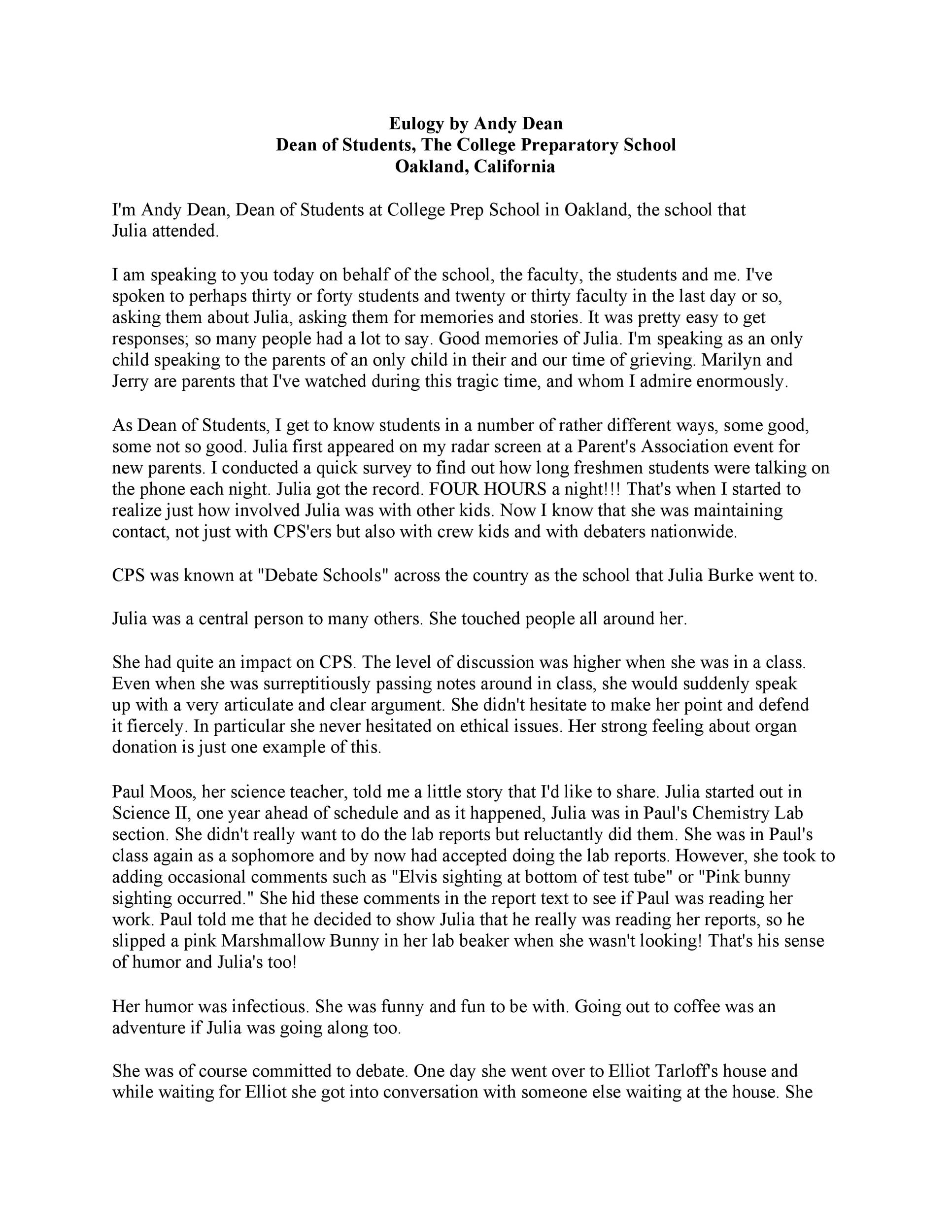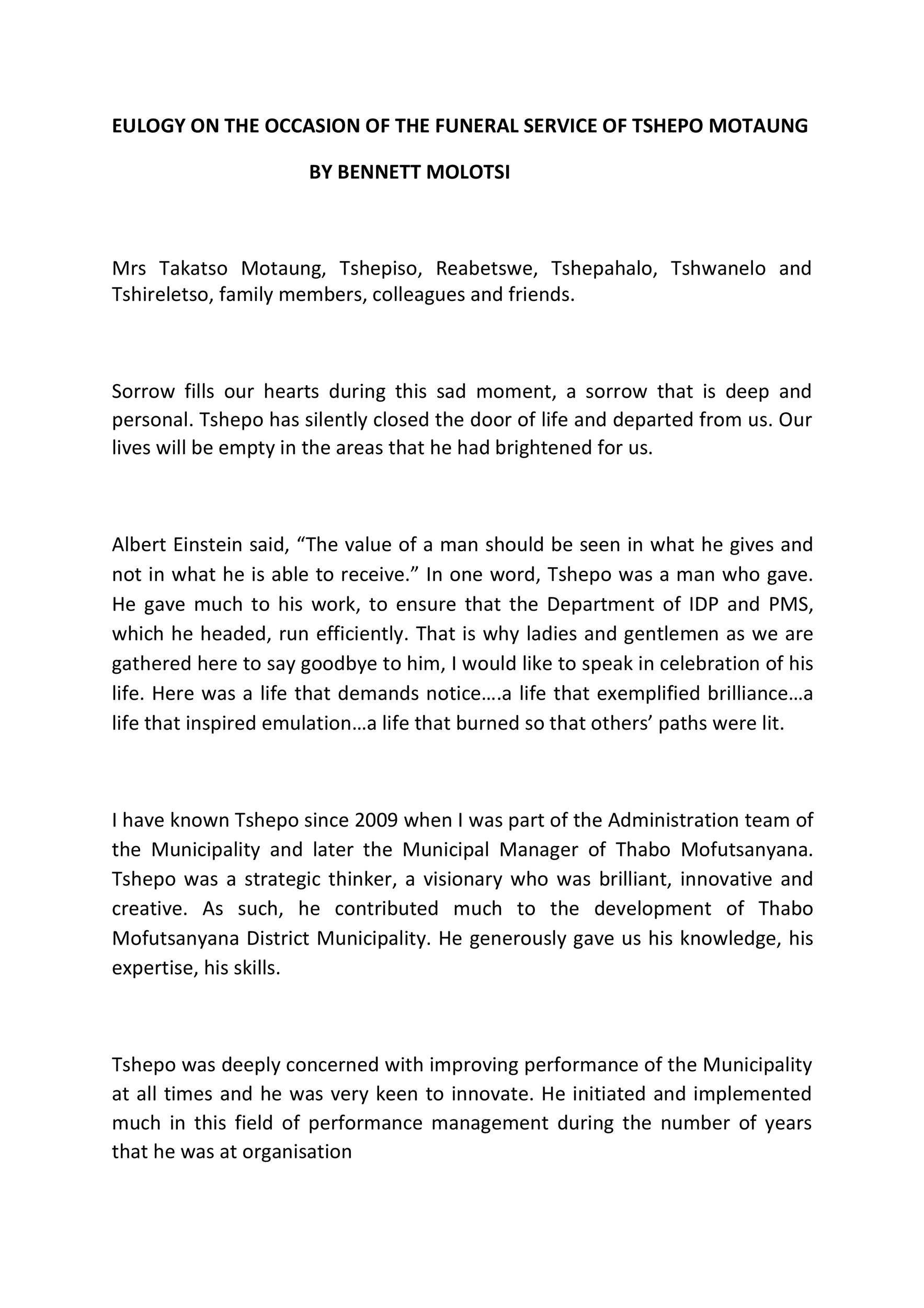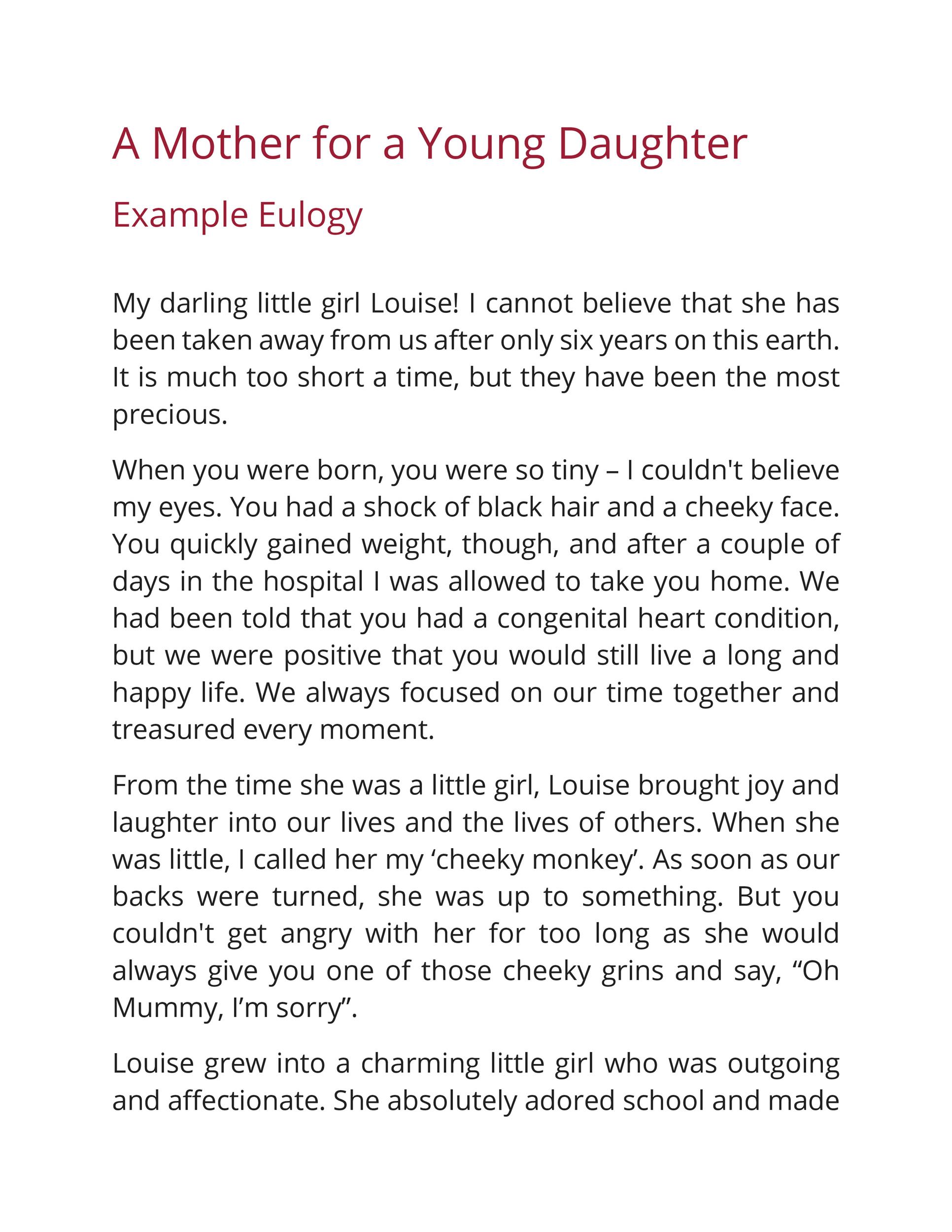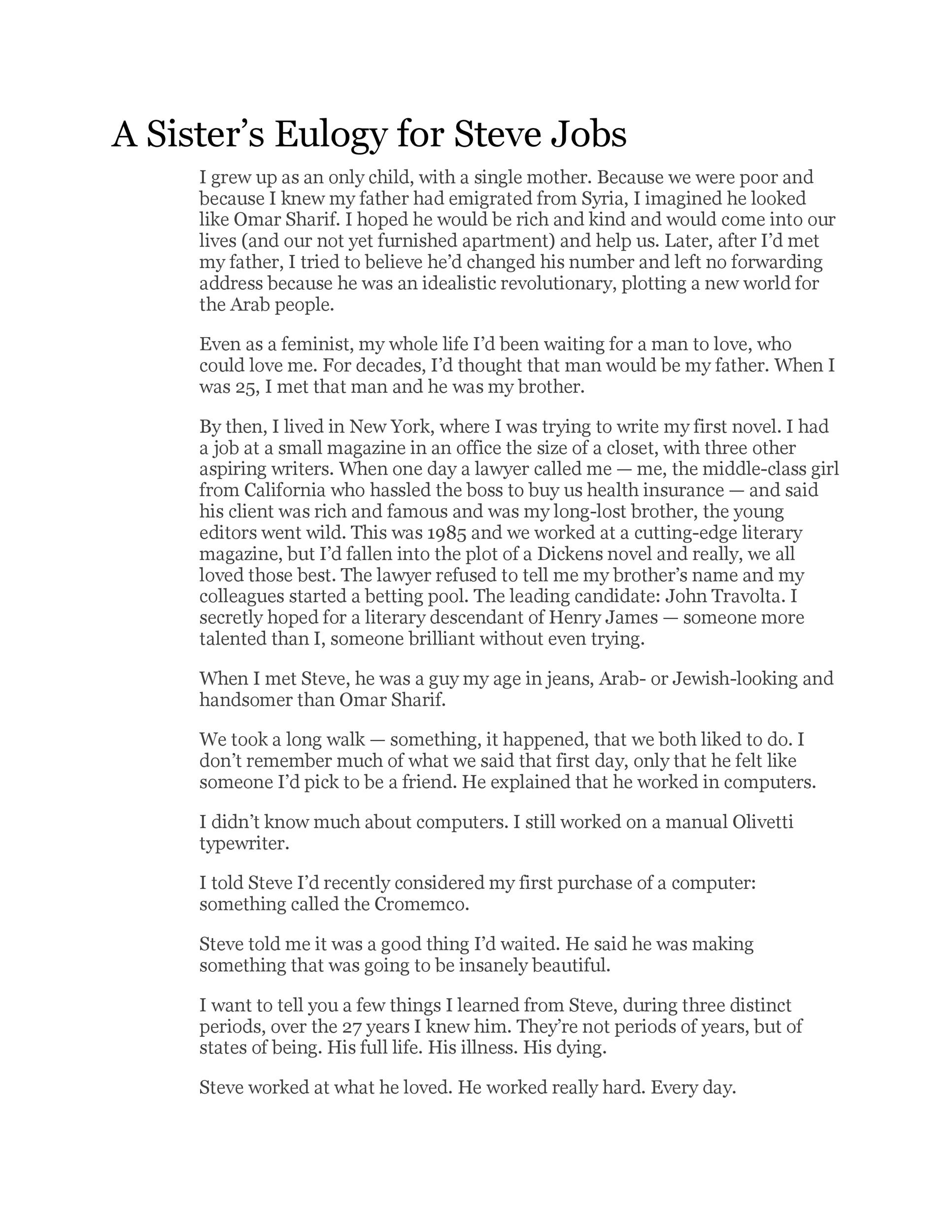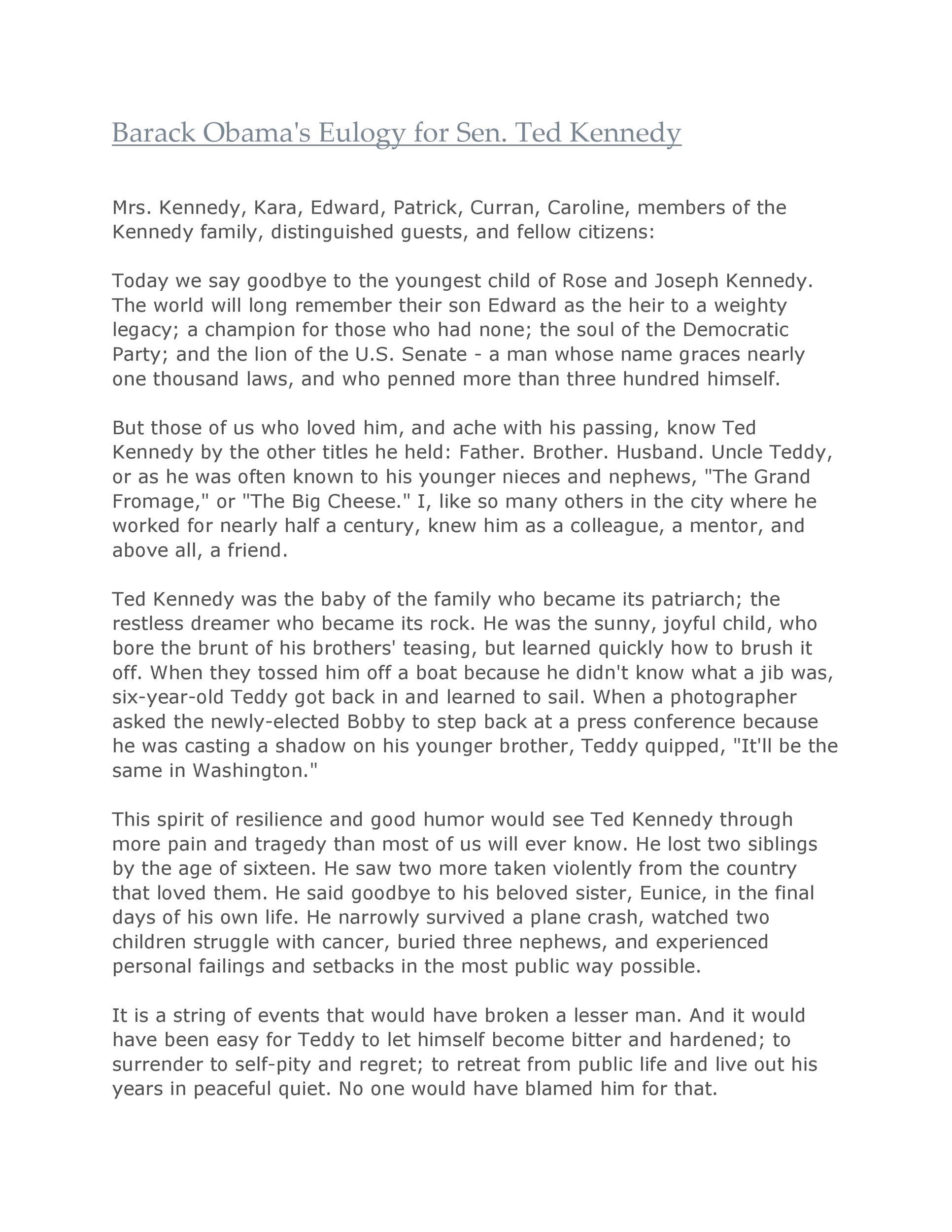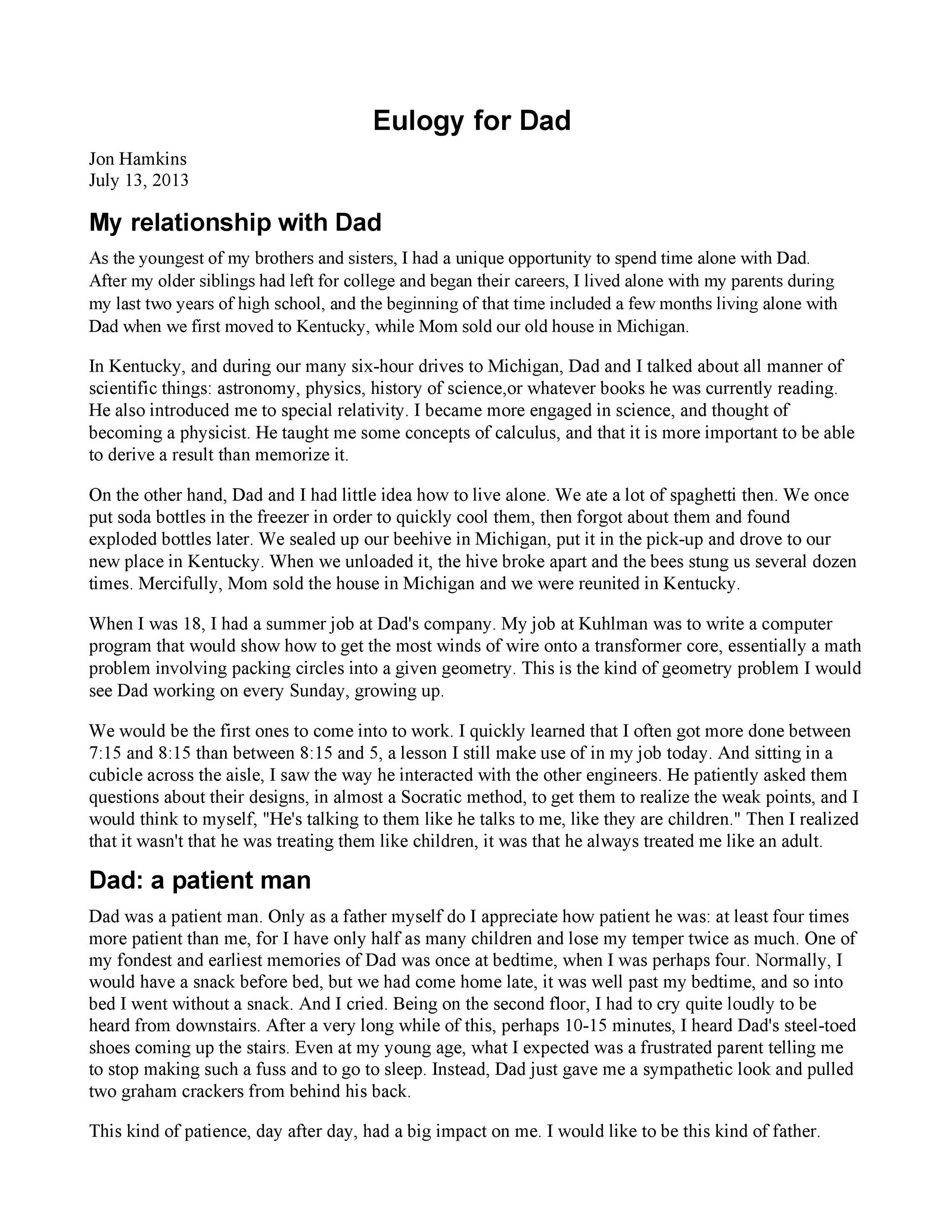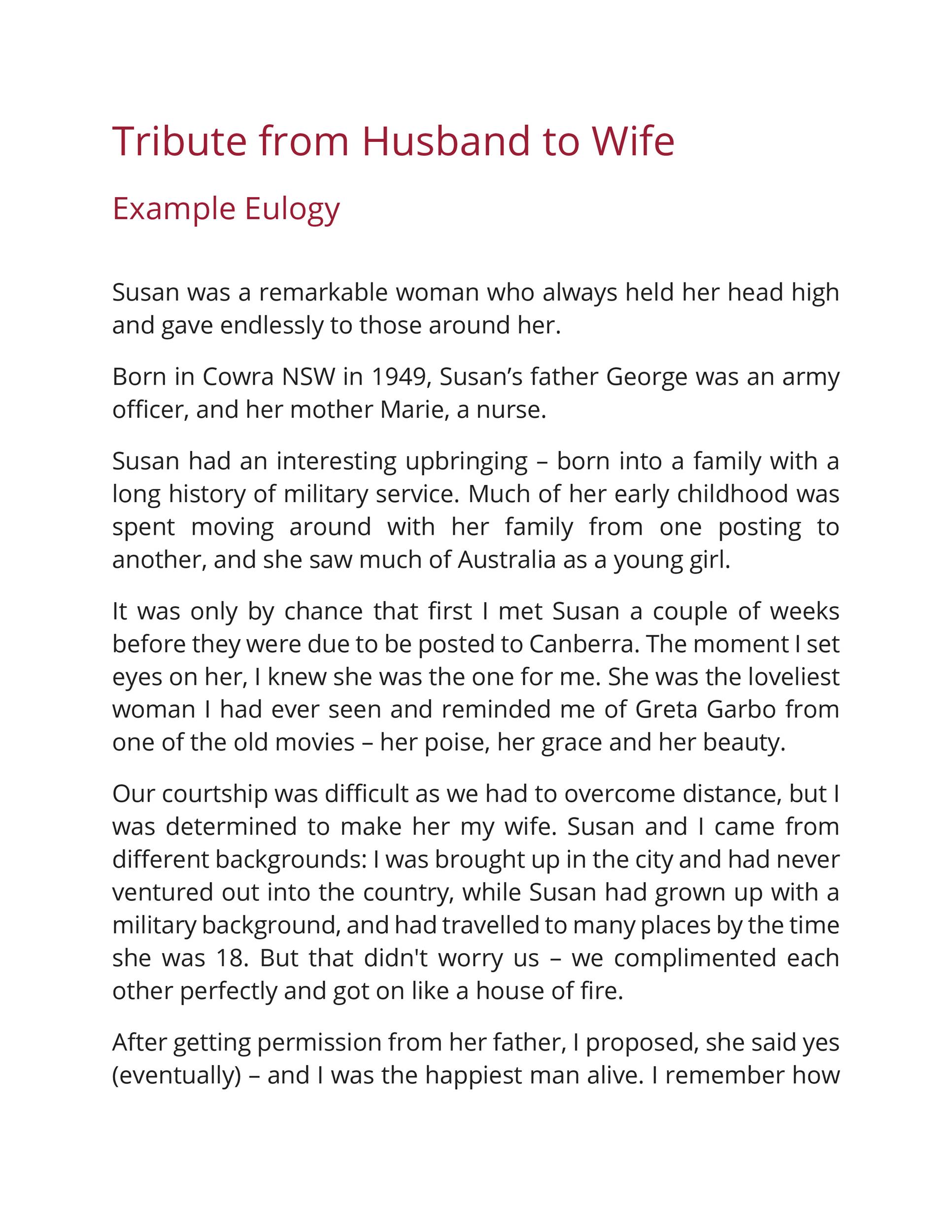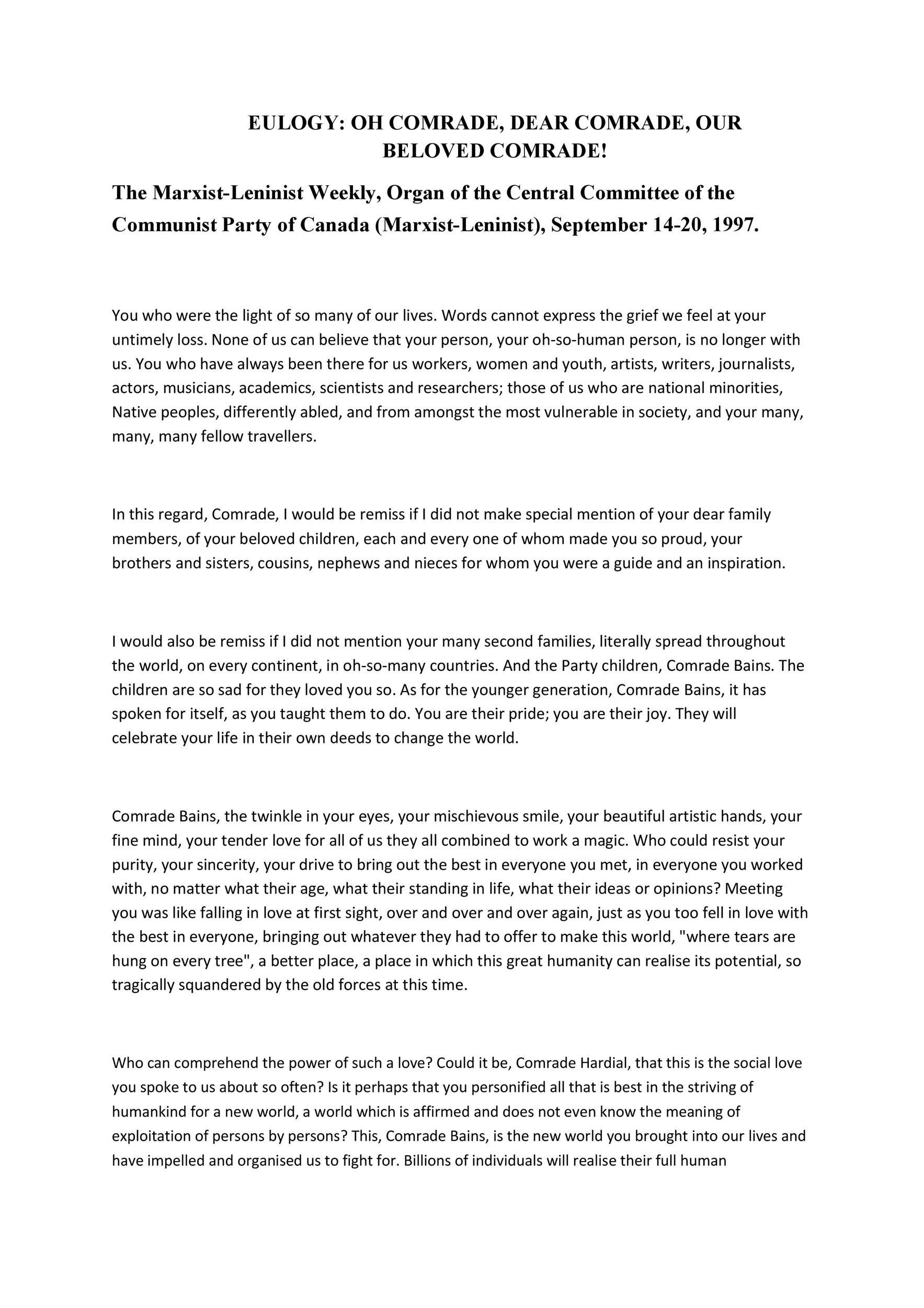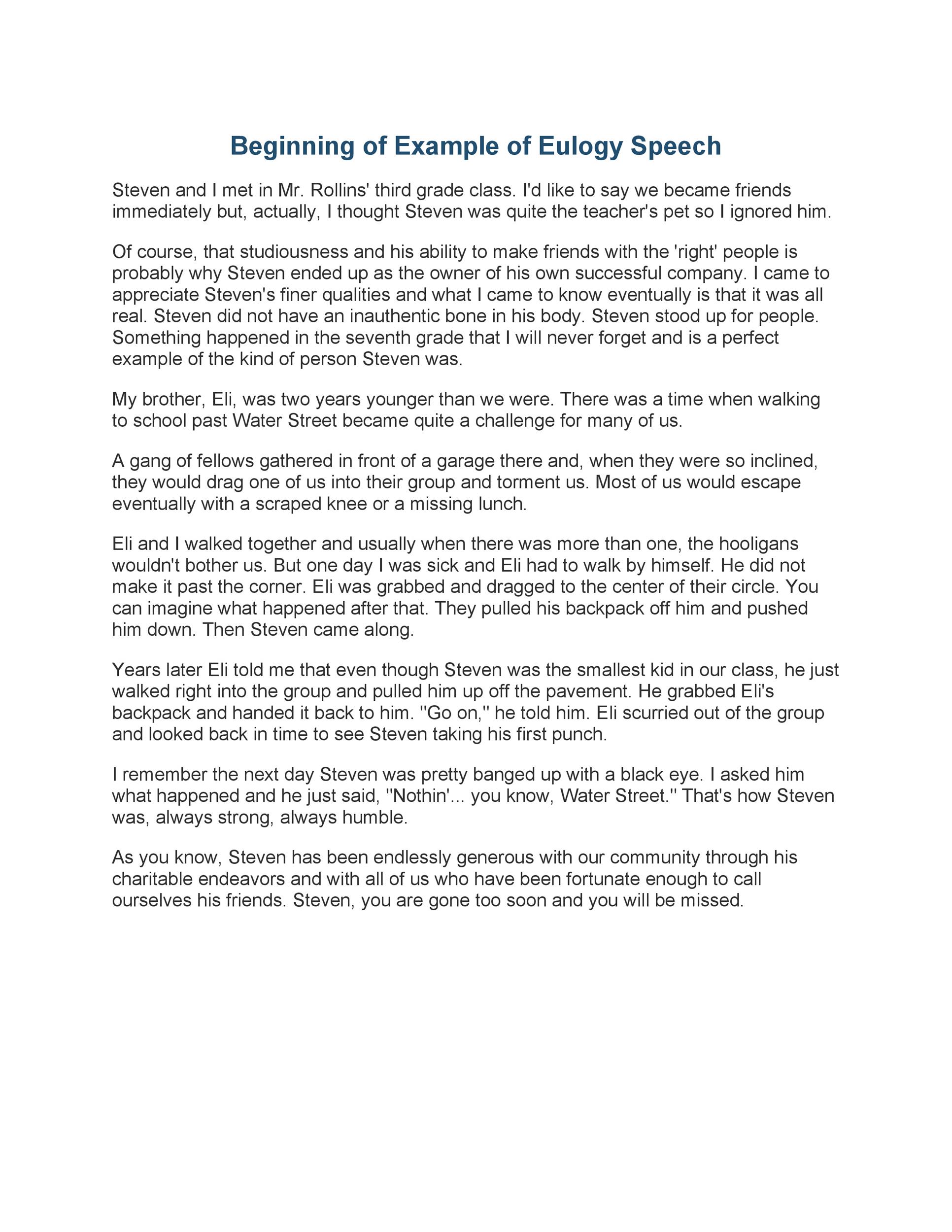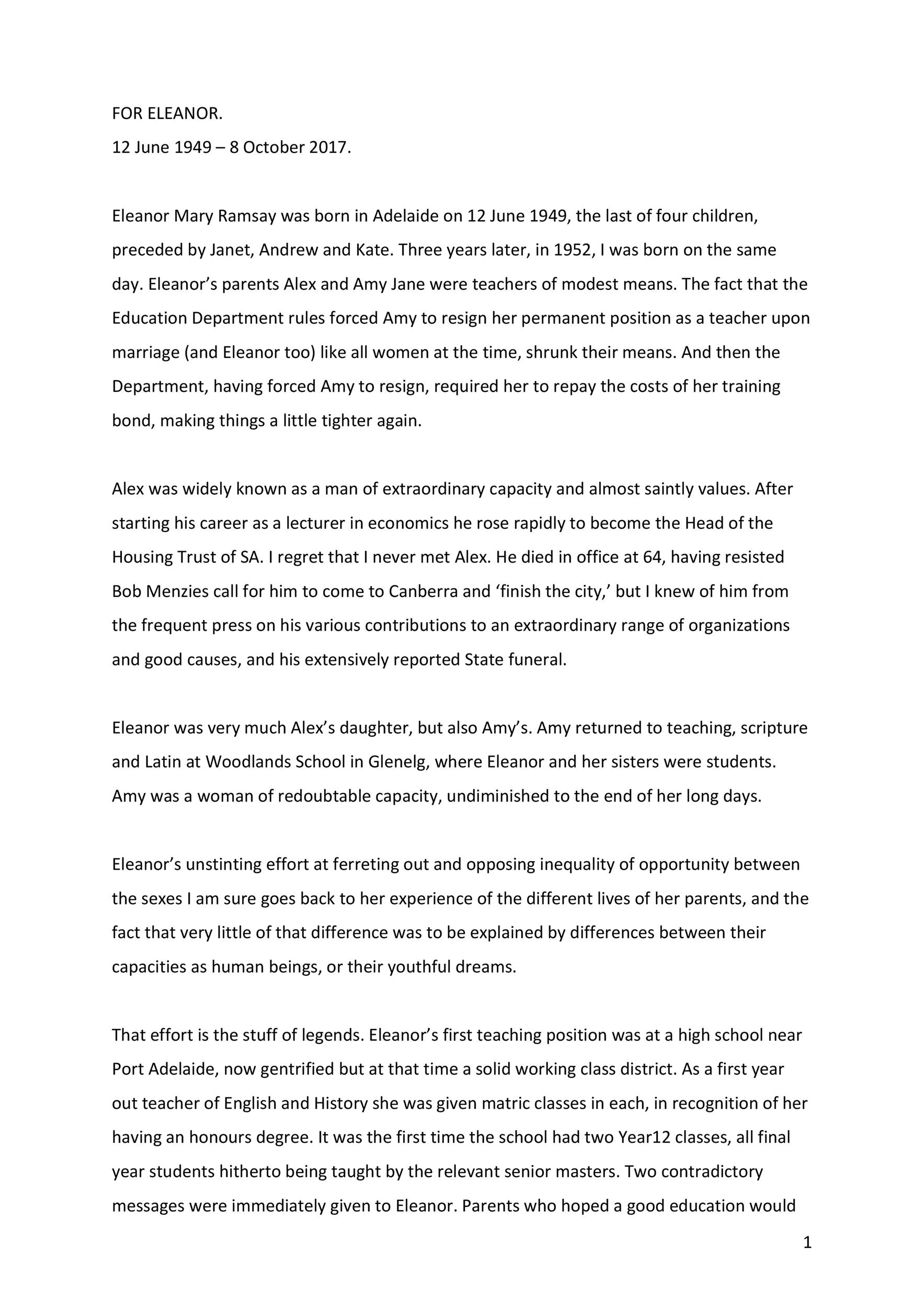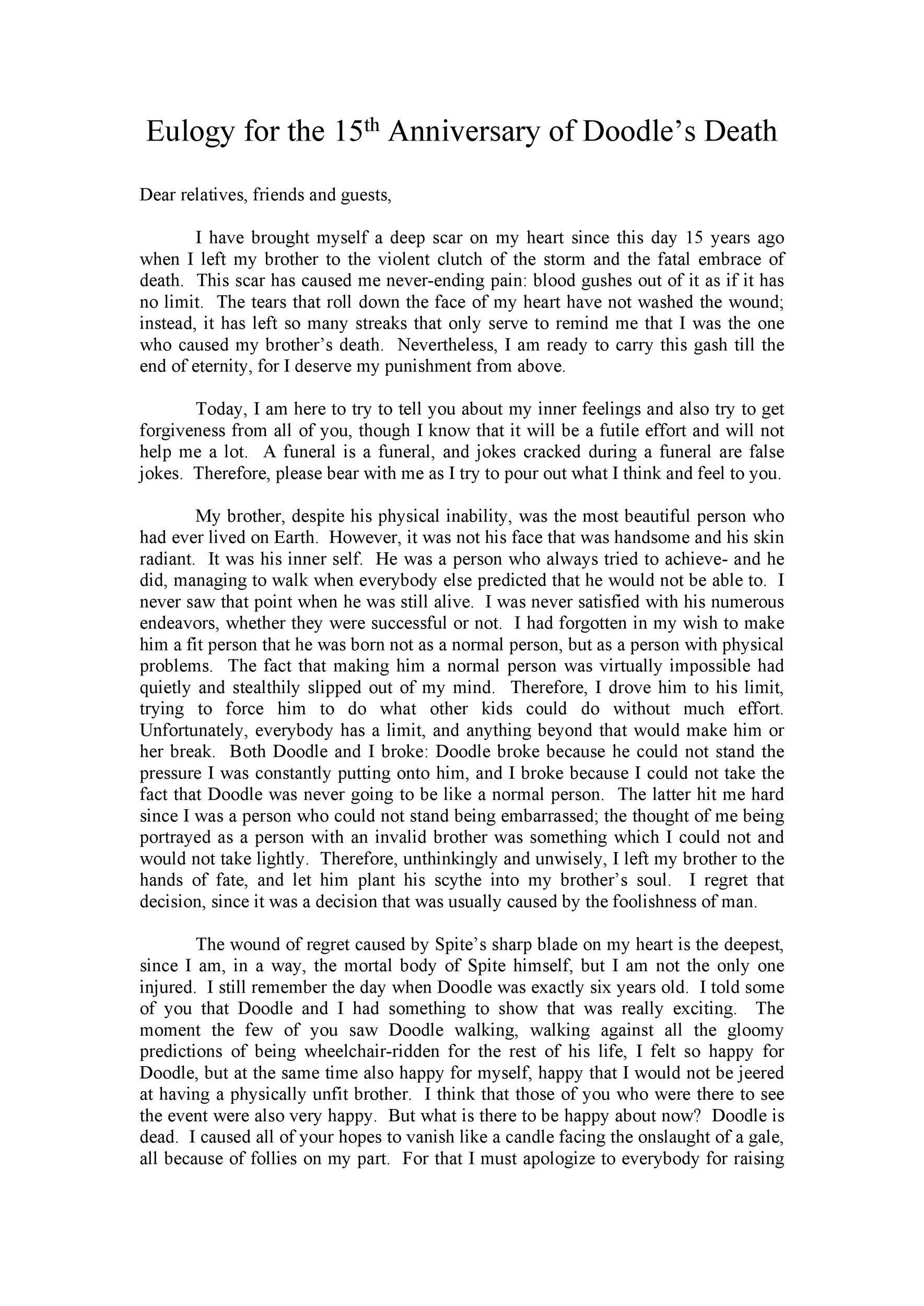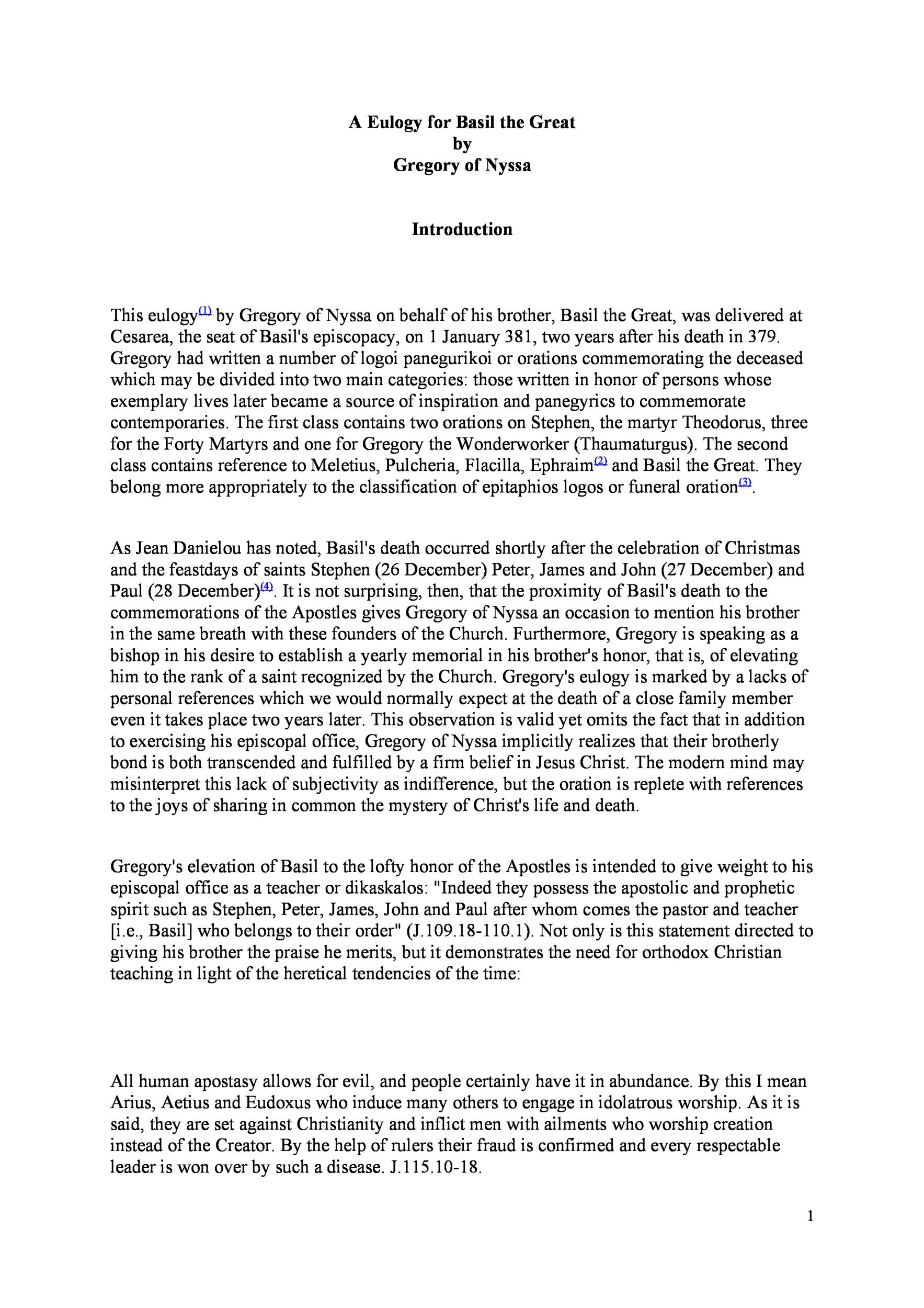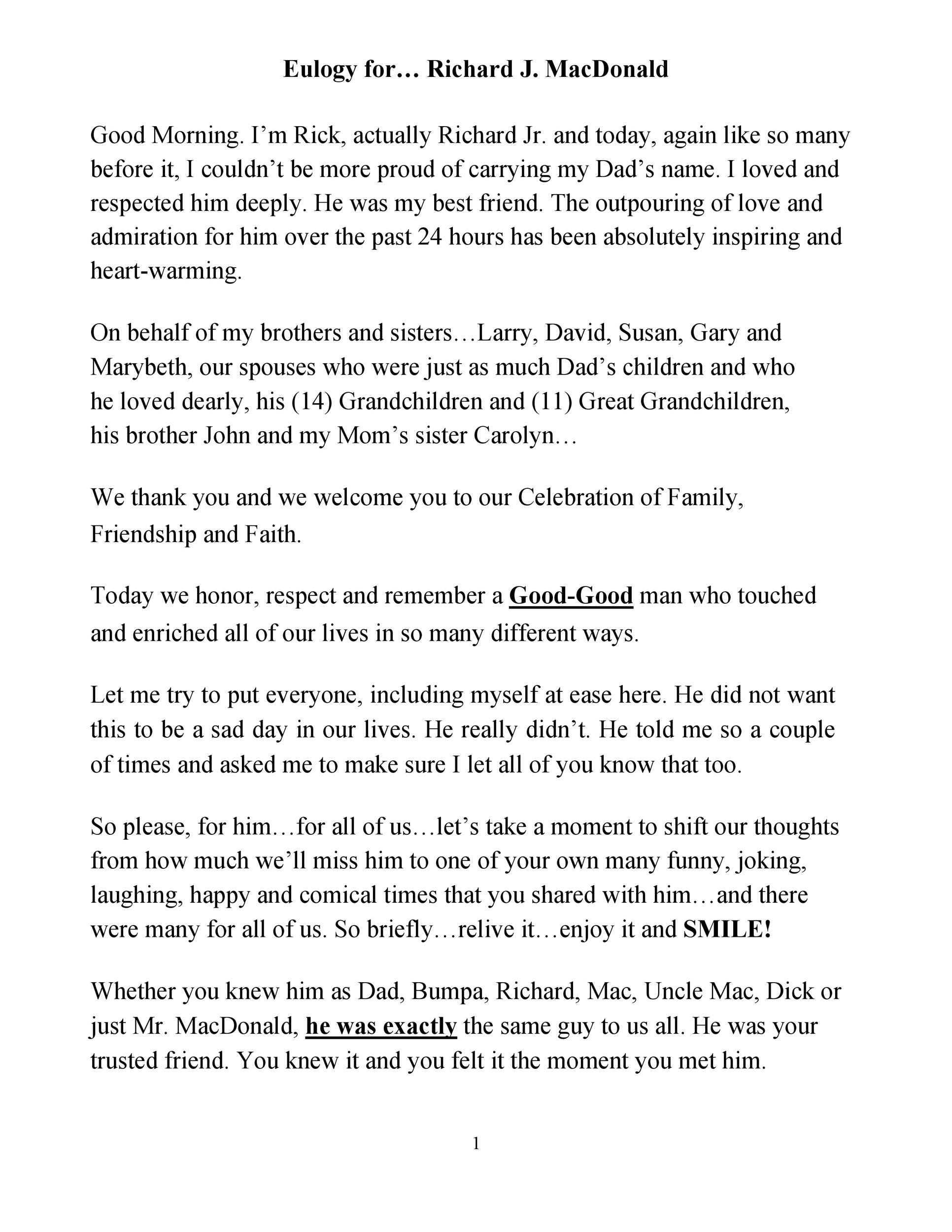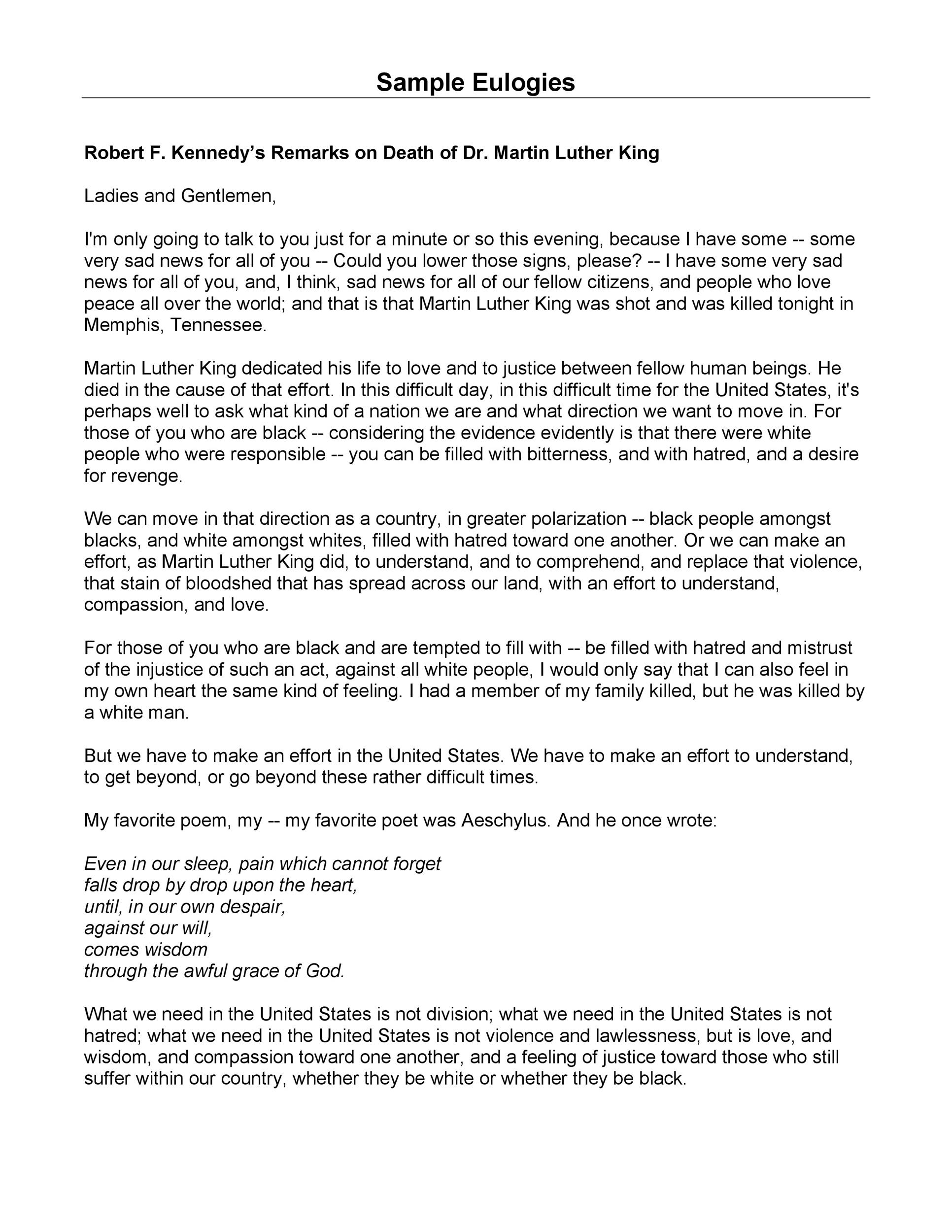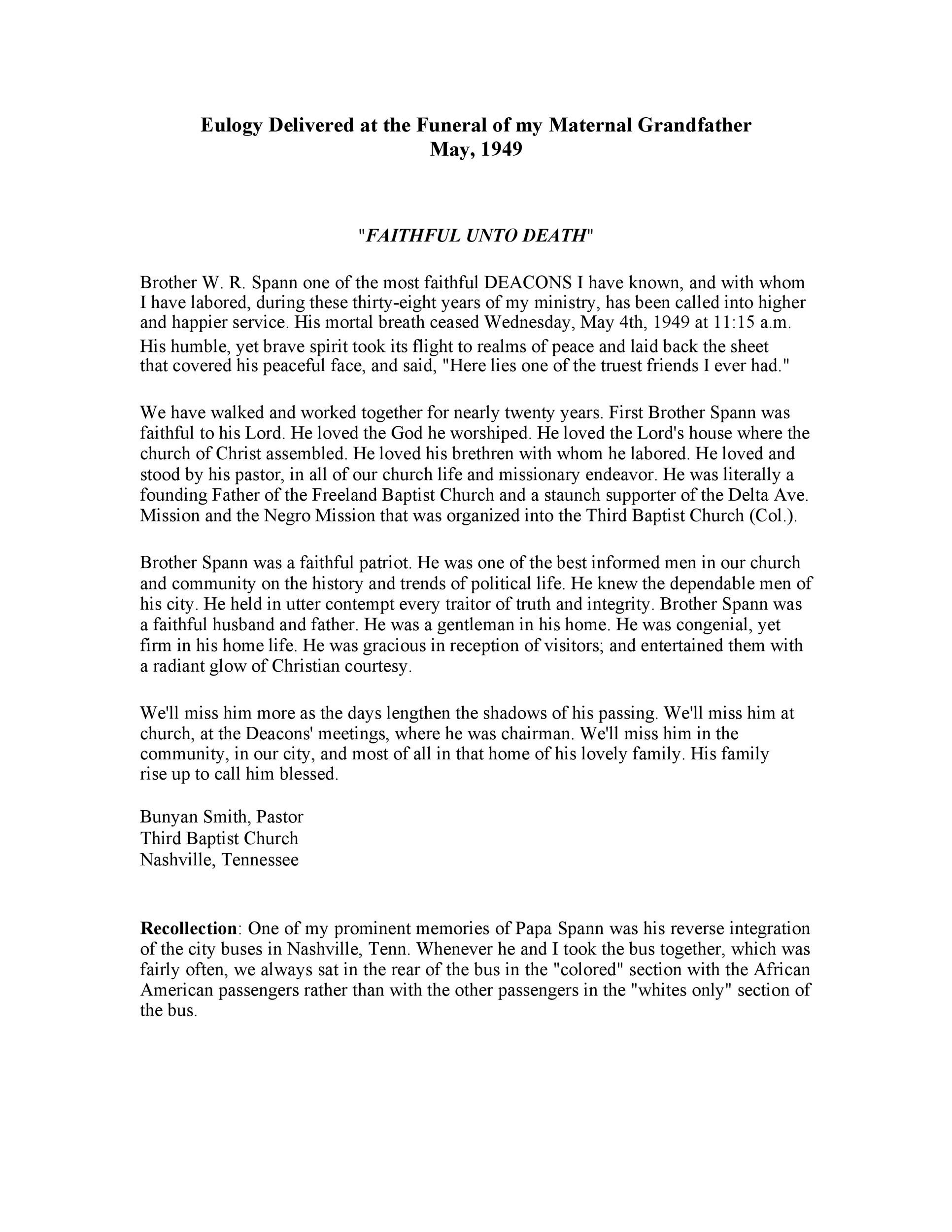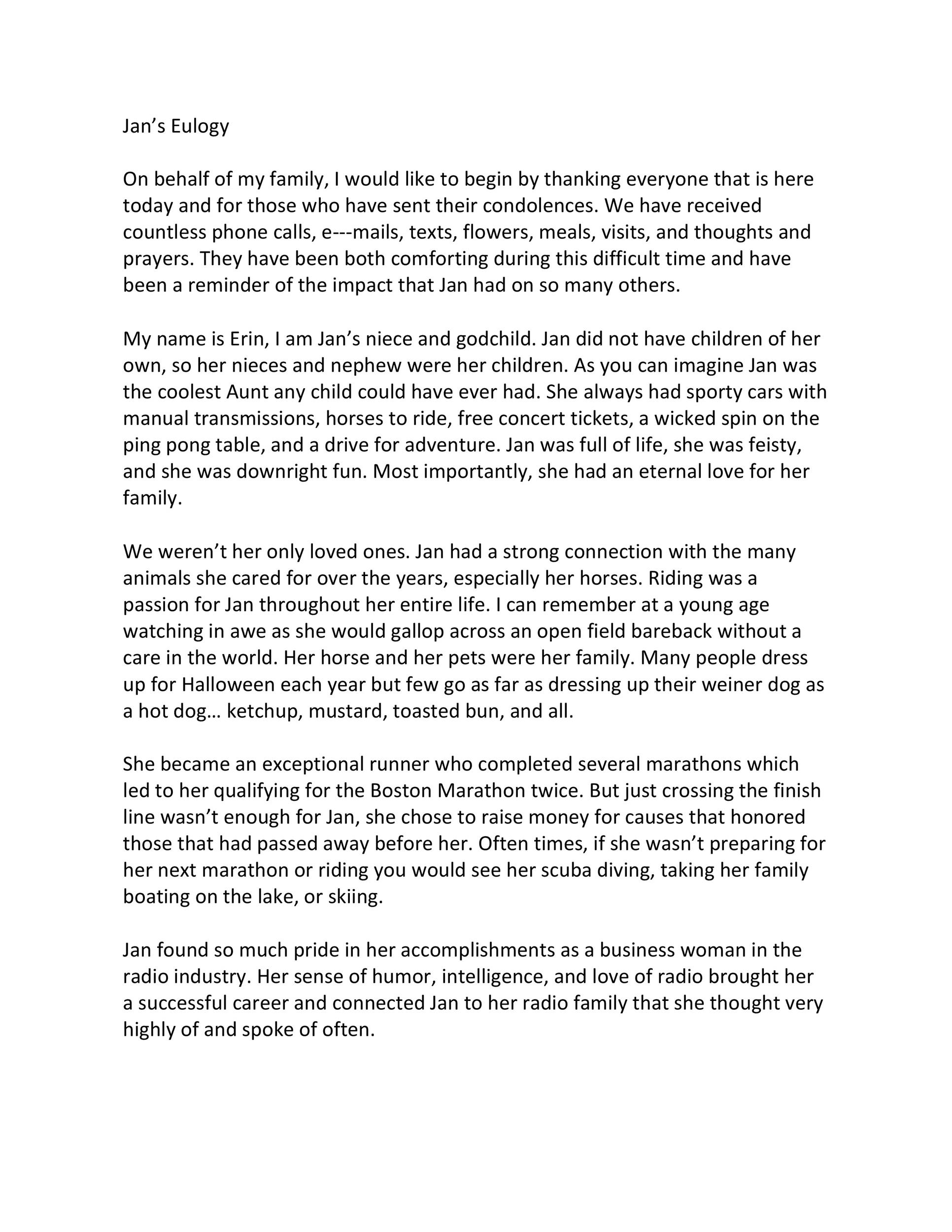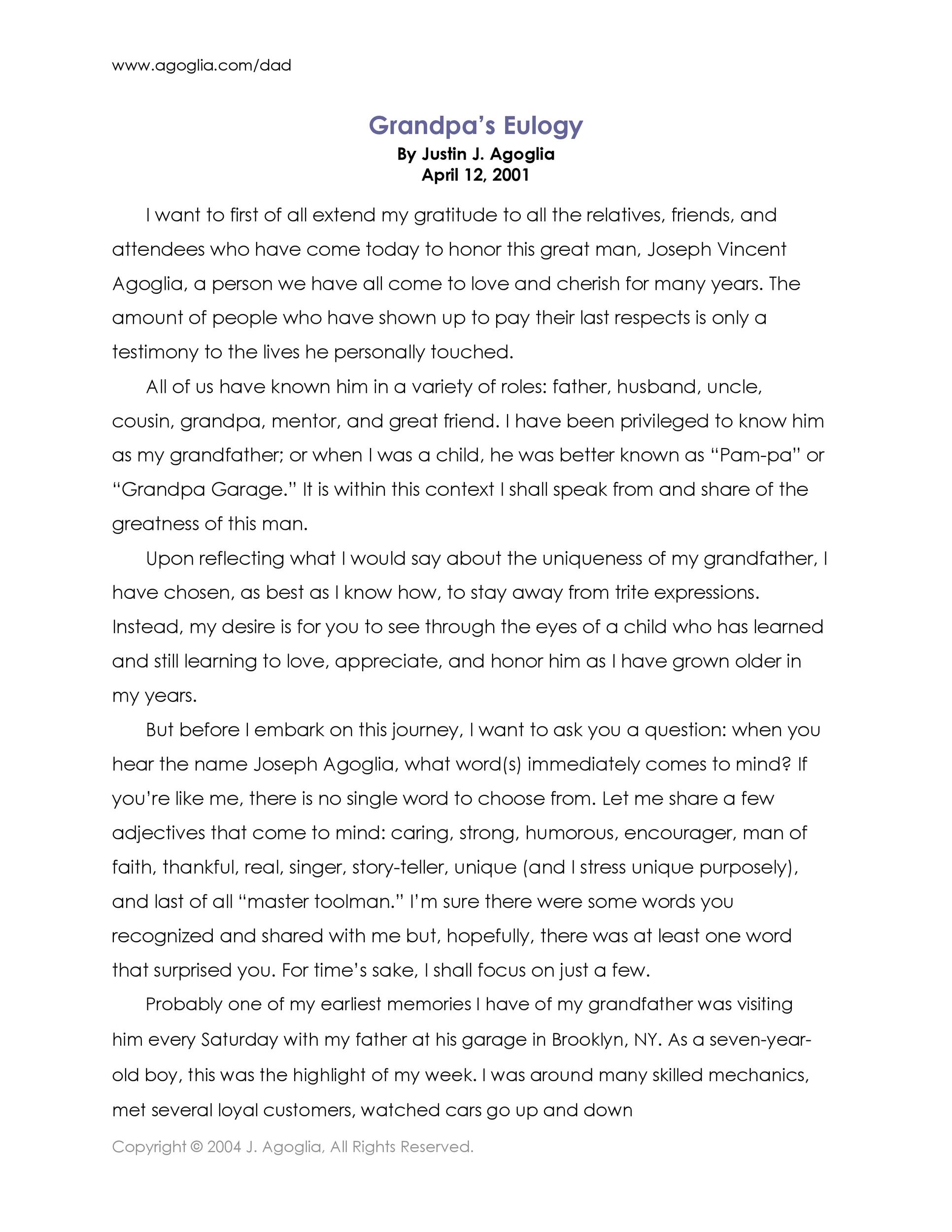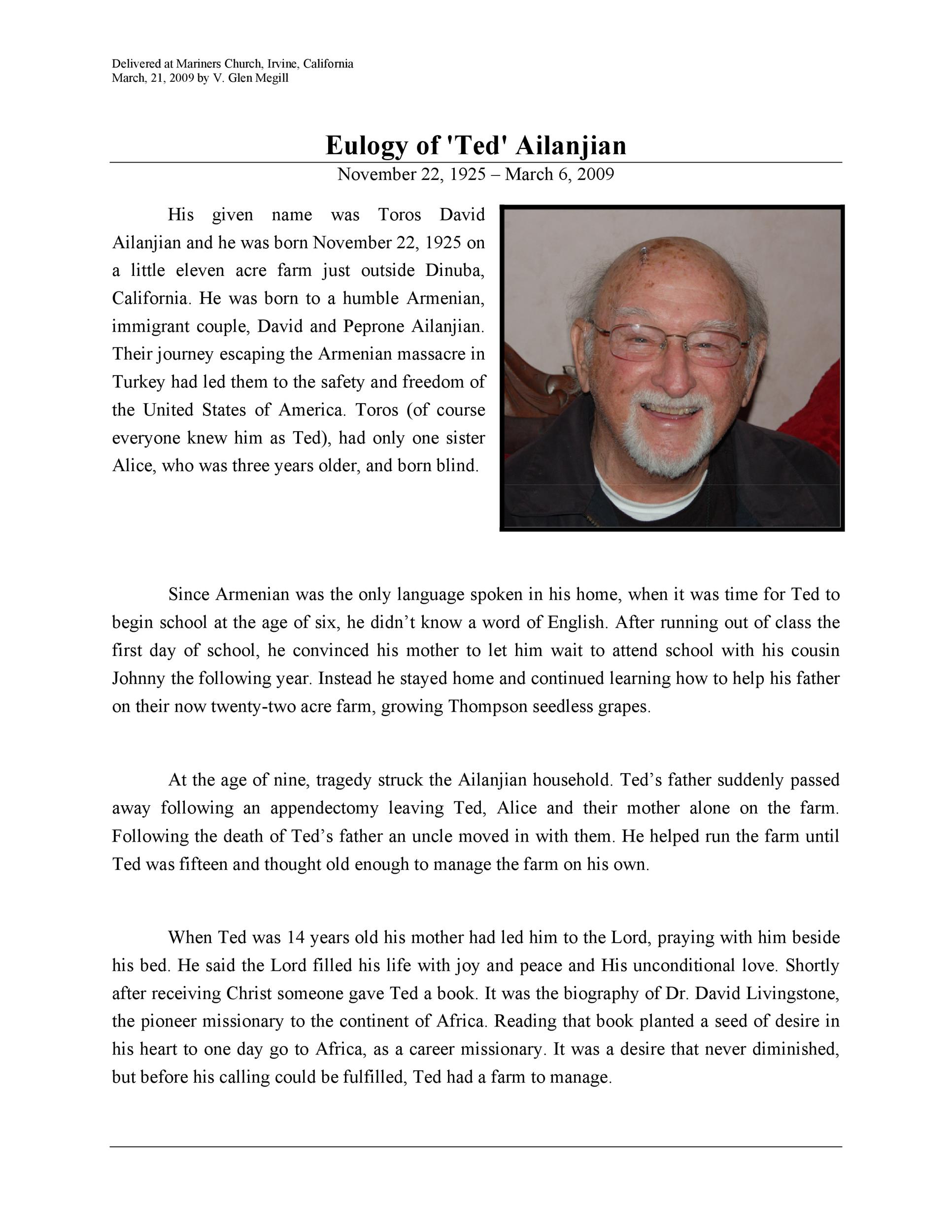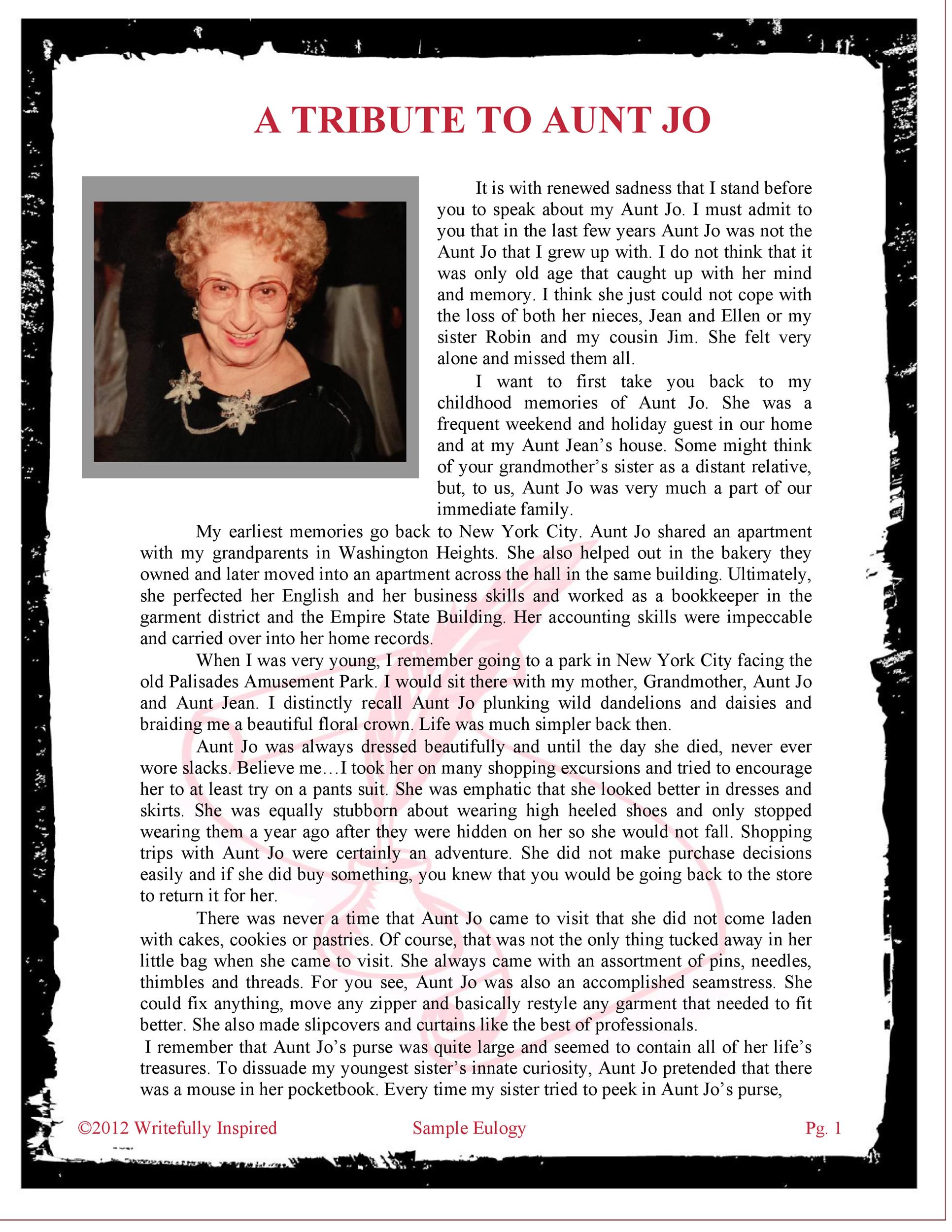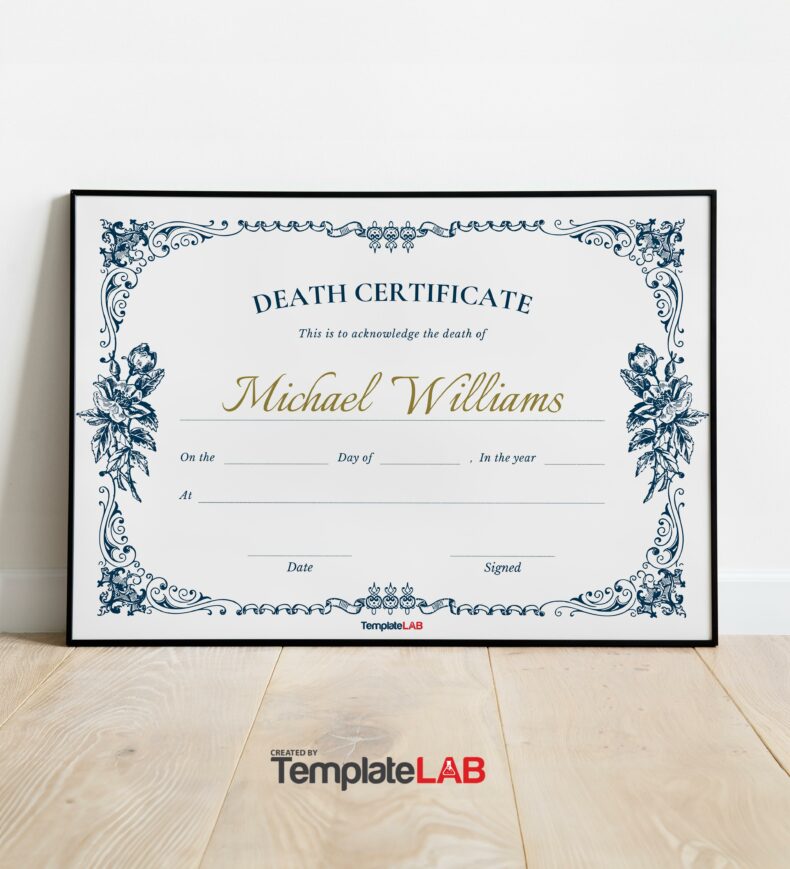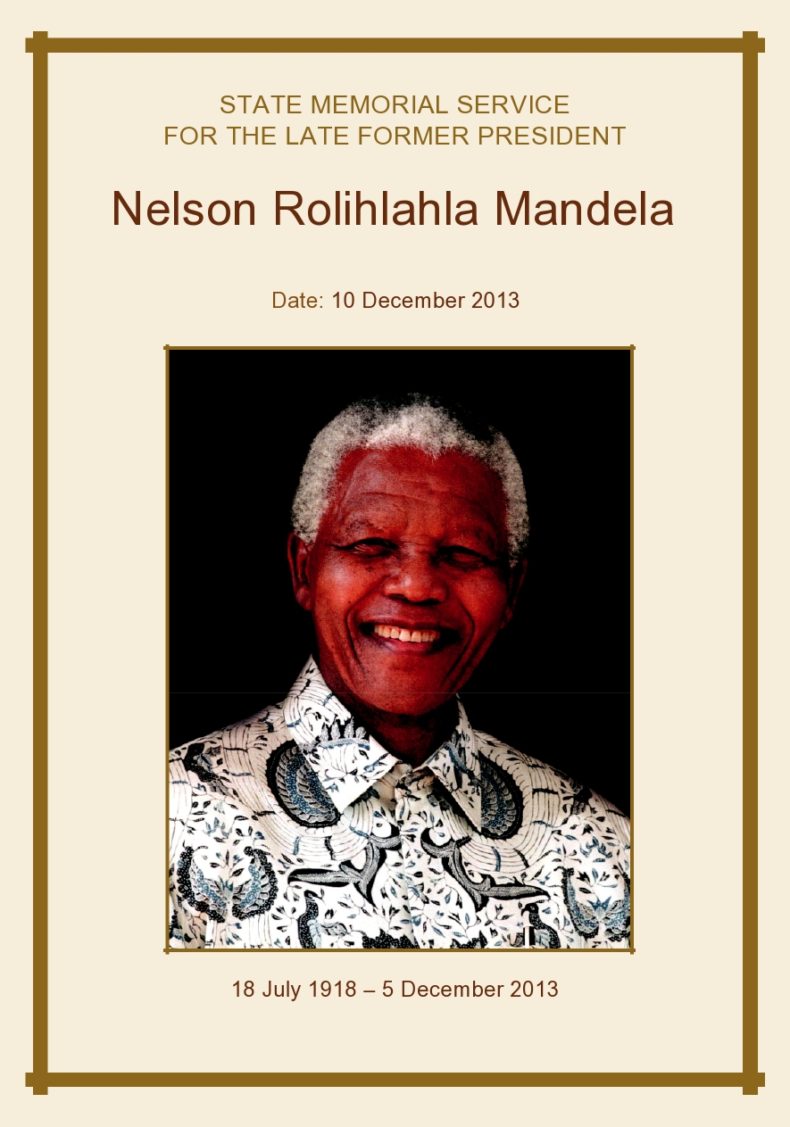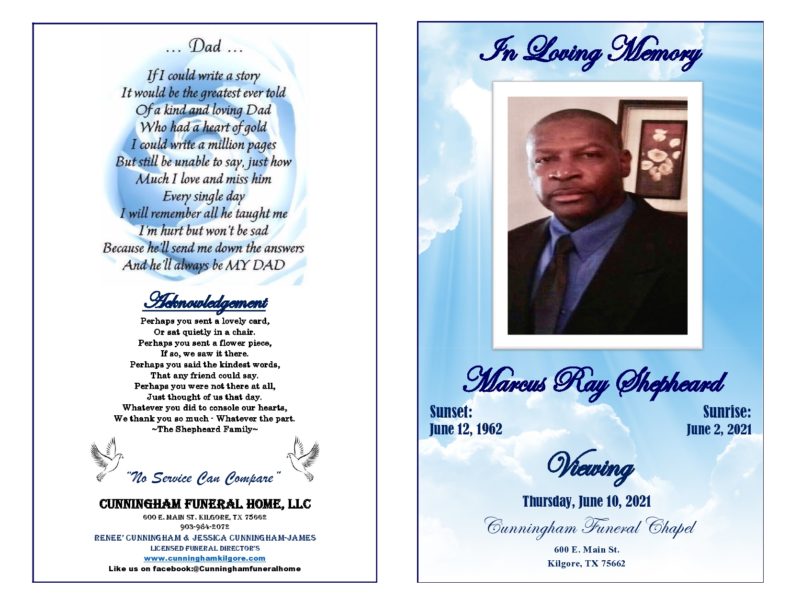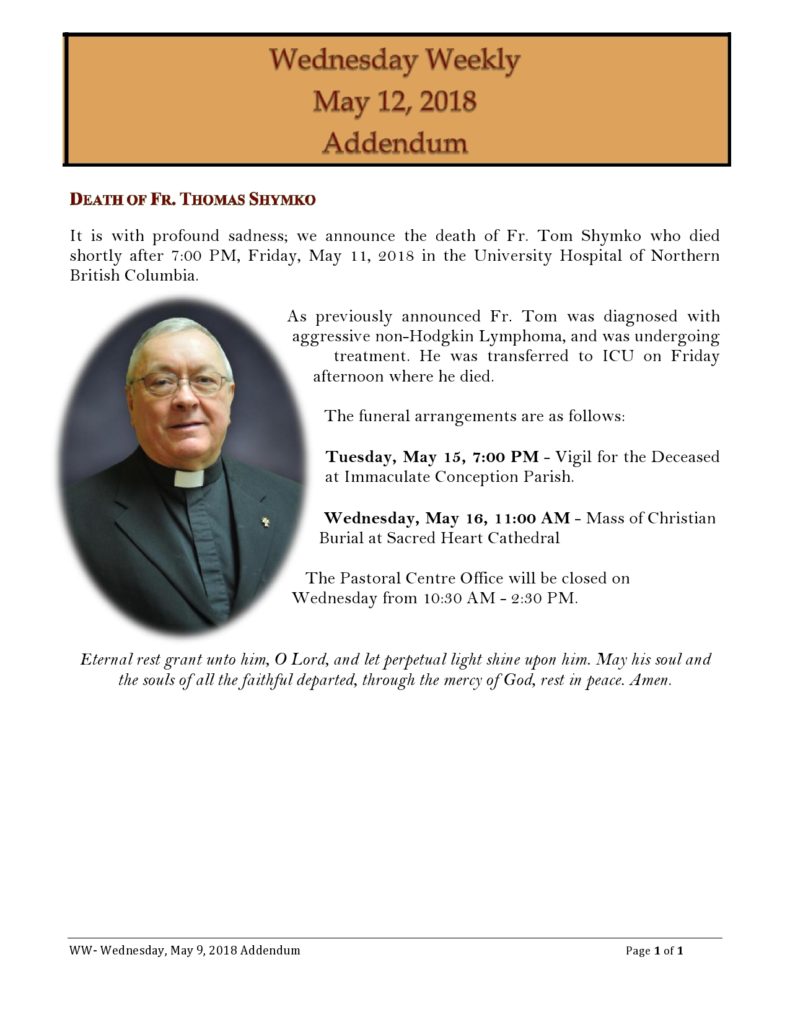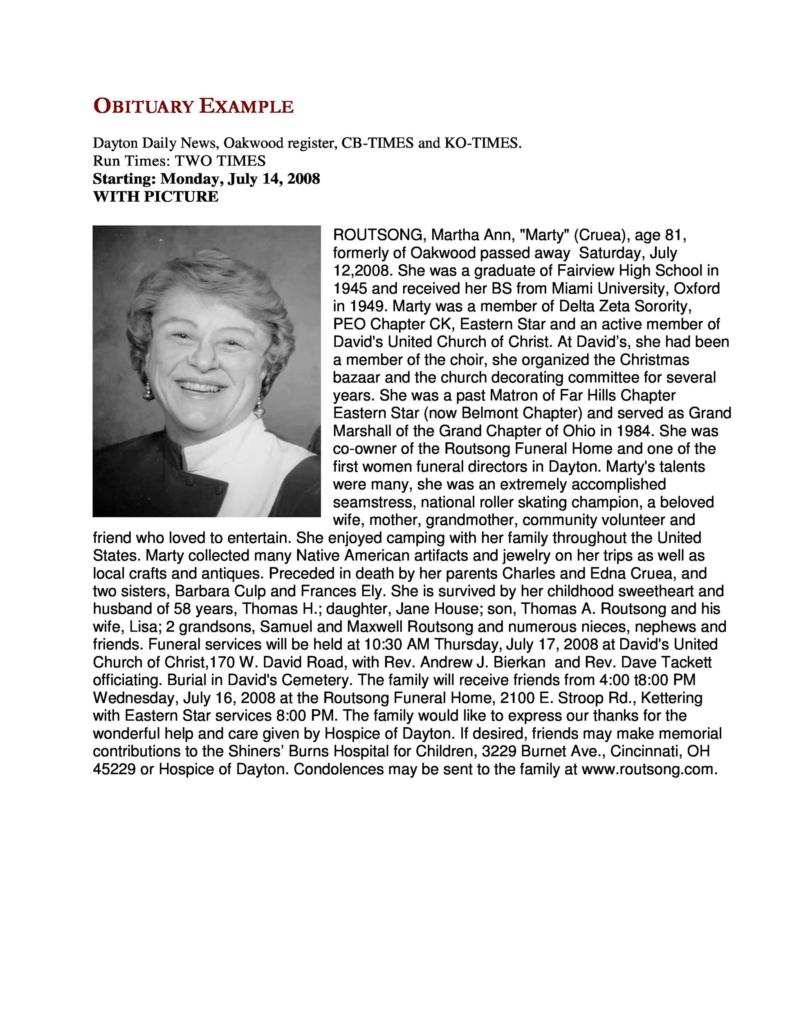Nobody wants to experience losing a person close to them. Sadly, though, this is an inevitable thing. One important aspect of saying our final farewell to a loved one is to give a short speech about the person who died and this speech is what’s known as a eulogy. In this article, we’ll focus on creating a eulogy template to help you through this difficult time.
Table of Contents
Eulogy Templates
What is a eulogy?
Although you can download a eulogy template online, you may want to just use this as your framework but customize the content to make it more personal. A sample eulogy is a type of speech meant to honor, commemorate or praise the life of someone who died.
The family of this person may choose someone outside of their family to give a eulogy if they have a close relationship with the deceased. Otherwise, the members of the family themselves may create the eulogy outline or assign the task to a priest.
More than one person can compose a eulogy speech outline for the deceased as long as it’s okay with the rest of the family. Also, if several people will give speeches, they may want to agree upon what they plan to talk about. For instance:
- One person may talk about the earlier years of the deceased.
- Another person may talk about the professional life or career of the deceased.
- Yet another person may speak about the character of the deceased.
- One of the members of the family may talk about all of the lessons imparted by the deceased.
In cases where several people will give eulogies, it’s best to stick to a maximum of 5 minutes for each speech to prevent the service from running for too long.
Eulogy Outlines
Parts of a eulogy template
For a lot of people, the task of composing a eulogy template seems extremely overwhelming. Imagine, you already lost someone and you have to come up with a speech to say in front of so many people. Probably the only good thing about this kind of speech is that you can say whatever is in your heart.
Strictly speaking, there is no standard eulogy format to follow. After all, this isn’t a professional type of speech which you must submit to your superiors. If this is your first time to compose such a speech, you may want to look at a sample eulogy to give you a better idea of what it should contain.
Eulogy Formats
When creating your eulogy outline, try to include the following parts to make it complete:
- Opening
Here, you may start with a short anecdote about the deceased or a funeral quote which contains a general message about death and losing someone. - Earlier years
If you had known the deceased from when he/she was still young, you may include this part. Usually, family members or close family friends may include this part in their eulogy speech outline. Share some of your best memories, some touching stories, and other good things you recall about the deceased.
If you went to school with the deceased, you may talk about the time you spent with the person at school. For sure, you would have a lot of fun stories to share as well as some life lessons which you may have learned from the person you lost. - Family
Talk about the family of the deceased, the people he/she left behind, and even a short history about how the deceased met his/her partner and started a family. - Professional life
If you worked with the deceased, then you may speak about his/her professional life. Share some achievements, accomplishments, what he/she was well-known for at work, and more. You may also share some of the most significant work-related events in the life of the person. - Fond memories and life lessons
This is the most emotional part of the eulogy format, especially if you shared a close relationship with the deceased. Talk about your fondest memories and all of the life lessons imparted to you by the person you lost.
Even without trying, this part would most likely be the one which brings the audience to tears as they also recall the moments they shared with the deceased. - Ending
After saying everything you want to share, it’s time to wrap things up. You may ask everyone to join you in prayer or you may use another quote which applies to the life of the deceased. Also, have a statement where you thank the person for being a part of all your lives and how you will all miss this person.
Eulogy Speech Outlines
How to write a eulogy?
If you receive the task of creating a eulogy template for a loved one, you would have a lot of mixed emotions about this. You have to deal with the grief of losing someone you love as you try to come up with the words to honor him/her. You don’t have to take this task too seriously.
You’ve already lost someone, don’t make this a burden on yourself. Instead, think of it as an opportunity to tell others how incredible the deceased was and how much he/she had an impact on your life. To guide you, here are some tips for creating your eulogy outline and speech:
- Have a brainstorming session
Before you start writing your eulogy speech outline, try to think about some ideas which you would like to include in your speech. From stories, personal information, memories, and more, there is a lot for you to choose from. You can even start a conversation with the family members of the deceased to ask for ideas for what you can add to your eulogy. - Write the introduction
In the introduction, make sure to acknowledge all the guests and the reason why they’re all gathered together. State how this is a celebration of life and a commemoration of the life of the deceased. Don’t forget to introduce yourself along with your relationship to the deceased. Then thank everyone for attending the funeral service. - Come up with a short biography
For the next few paragraphs of your speech, you may want to talk about the life of the deceased. If you hadn’t known the person when he was young, it would be a good idea to speak to the family members of the deceased. Of course, you shouldn’t interview them strictly. Remember, they are all grieving as well.
Instead, speak to them casually and in a light tone. Get them to open up to you and share their fondest memories. Once in a while, you may ask some questions in order to build your biography. But if they don’t want to talk too much, don’t push the topic. If you don’t have enough information for this part, you can move on to the next. - Talk about the deceased
After giving a short background of the deceased, it’s time to speak about him/her more. Share some special memories you have, a couple of stories, and even some of the most unique qualities of the person. If you shared a special bond with the deceased, this part would be very easy to write.
While you write your speech, don’t push yourself too hard. If you’re feeling an overwhelming wave of emotion sweeping over you, take a break and find something else to distract you. When you feel more clear-headed, continue with your writing. This allows you to create a heartwarming speech that isn’t too sad or emotional.
Again, you may speak to other people to get inspiration and ideas from them. This is especially true if you’re the only one assigned to give a eulogy during the service. Talk to family members, friends, and colleagues so you can paint a complete picture of the life of the deceased.
Organize all of the information you’ve gathered to make it more interesting and understandable. Then add your own input to the ideas which you have gathered. As you write this part of the speech, you’ll have a better idea of who the deceased person was. - Write the closing
For the last part of your speech, try to think of some effective words of comfort. You grieve with everyone else in attendance but as the person assigned to deliver the eulogy, it’s your responsibility to bring some comfort to the crowd.
Talk about the most important lessons you have learned from the deceased and how much he/she affected your life. After this, close your speech by saying goodbye to the person and by thanking him/her for being an important part of your life. - Proofread your speech
Before printing out your speech and delivering it during the service, make sure to proofread it first. Emotional as this time may be, the impact of your speech might get reduced if it has a lot of grammatical errors. After checking the speech yourself, ask another person to check it again for you.
Ask help from one of the members of the family or from a close family friend to proofread your speech for you. When you’re confident about the speech you’ve created, you may now deliver it during the funeral service.

